

Online Food Delivery Business Plan [Sample Template]
By: Author Tony Martins Ajaero
Home » Business ideas » Food Industry » Food Delivery Business

If you are interested in starting a business in the food cum restaurant industry, then one of the ways you can enter the industry is to create your niche or choose a niche that you can effectively maximize.
Starting food delivery services to homes and offices (corporate organizations might just be the door into starting something thriving and profitable. No doubt if you want to start a new business, it is required that you have a good business plan in place before launching out if indeed you don’t want to run your business as a mediocre.
Suggested for You
- Salad Delivery Service Business Plan [Sample Template]
- Marijuana Cafe Business Plan [Sample Template]
- Beer Garden Business Plan [Sample Template]
- Deli Business Plan [Sample Template]
- Kangen Water Business Plan [Sample Template]
Below is a sample homes and offices food delivery services business plan template that can help you to successfully write your own with little or no difficulty;
A Sample Online Food Delivery Business Plan Template
1. industry overview.
Players in the homes and offices food delivery services industry are involved in delivery foods to any destination within their coverage area as ordered by their clients. Basically, the process of ordering food from a local restaurant or food cooperative is through their telephones, website or customized mobile app.
It is same process when ordering goods from online stores, and many of these food delivery services companies allow customers to keep accounts with them in order to make frequent ordering convenient. Payments are usually done either by credit card or cash, with the restaurant returning a percentage to the online food company if they are not the owners of the restaurant.
The food delivery services industry is indeed a thriving and profitable industry so much so that, in 2008, Papa John’s International announced that its online sales were growing on average more than 50 percent each year and neared $400 million in 2007 alone.
A recent research conducted by TechCrunch reported that “of the $70 billion [ takeaway and delivery market ], only about $9 billion (roughly 13 percent) is online. The established delivery infrastructure of these franchises was well suited for an online ordering system.
The home and office food delivery services industry much active in the United States of America, Canada and European countries.
The industry generates several millions of US dollars annually from several registered and unregistered small – scale, medium scale and big home and office food delivery services businesses scattered all around The united states of America.
This line of business is responsible for the employment loads of people directly and indirectly all around the world. The recent trends in the food delivery services industry is that, local companies have started teaming up with e-commerce companies to make ordering quicker and more precise.
Some restaurants have embraced online ordering despite their lack of delivery systems, using it to manage pick-up orders or to take reservations.
If you are contemplating opening a home and office food delivery services business in the United States, you should ensure that you carry out a thorough market survey and feasibility studies so you that you will be able to get the ideal location with the right demographic composition.
The truth is that, if you get some key factors wrong before starting your own home and office food delivery services business, then you are likely going to struggle to stay afloat.
2. Executive Summary
Food @ Your Door Step® LLC is a standard and registered home and office food Delivery Company that will be based in Boston – Massachusetts, USA. We will cover a wide range of clients both individual and corporate clients. We have been able to lease a suitable restaurant facility with kitchen permit from the appropriate authorities.
The facility is centrally located in the heart of Boston and little minute drive to Harvard University Community. We have put plans in place to also sell our franchise and offer consultancy services in line with our area of business.
Food @ Your Door Step® LLC is established by the Massachusetts awarding winning food nutritionist and caterer – Ms. Clara Brown who has B.Sc. in Food Science Technology and a Master’s Degree in Business Administration (MBA) from Harvard Business School.
She has a robust experience in the food and confectionaries business having worked both in the public sector and the private sector prior to starting her own business.
As a company, we are willing to go the extra mile to invest in some of the finest professionals (chefs, delivery officers and back office staff members) we can find and also we have set plans in place to acquire the best of equipment when it comes to setting up a standard and first class restaurant / kitchen.
When it comes to hygiene and proper packaging, we have put plans, process and structures in place that will ensure that we are always at the top of game when it comes to that. We have been able to secure permits from all relevant departments in Massachusetts.
The demand for foods, snacks and drinks is not going to plummet any time soon, which is why we have put plans in place to continue to explore all available market around the cities where our restaurant is going to be located and ensure that we create a wide range of distribution channels via franchising. With that, we know that we will be able to maximize profits in our business.
Our strongest selling point at Food @ Your Door Step® LLC is the unique taste of the different type of foods, snacks and drinks that we will make and sell. There is hardly any customer that will taste any of our food who would not want to come back and make more purchase or order more– we take great delight in welcoming repeated customers over and over again.
Food @ Your Door Step® LLC will at all times demonstrate her commitment to sustainability, both individually and as a firm, by actively participating in our communities and integrating sustainable business practices wherever possible.
We will ensure that we hold ourselves accountable to the highest standards by meeting our customers’ needs precisely and completely whenever they patronize our products. We will cultivate a working environment that provides a human, sustainable approach to earning a living, and living in our world, for our partners, employees and for our customers.
Our plan is to position Food @ Your Door Step® LLC to become one of the leading brand in the home and office food delivery services industry in the whole of Massachusetts, and also to be amongst the top 10 home and office food delivery services brand in the United States of America within the first 10 years of starting our business.
This might look too tall a dream but we are optimistic that this will surely come to pass because we have done our research and feasibility studies and we are enthusiastic and confident that Boston – Massachusetts is the right place to launch this type of business before spreading to other cities all across The United States of America.
3. Our Products and Services
Food @ Your Door Step® LLC is in the home and office food delivery services industry for the purpose of making profits and we will ensure we do all that is permitted by the law of the United States of America to achieve our business aims and objectives. Here are some of our products and services;
- Takeout and delivery
- Sit-down service
- Trainings, consulting and advisory services
4. Our Mission and Vision Statement
- Our vision is to be amongst the top 10leading home and office food delivery service companies in the United States of America before our 5 th anniversary.
- Our mission is to build a home and office food delivery services business that will meet the needs of all our customers and potential customers in the regions / cities where we have our delivery network.
Our Business Structure
Food @ Your Door Step® LLC do not intend to start a home and office food delivery services business that can only cover only households within our community of operations; our intention of starting a home and office food delivery services business is to build a standard business with active presence in strategic locations in Boston, Massachusetts and of course other key cities spread across the United States.
We will ensure that we put the right structure in place that will support the kind of growth that we have in mind while setting up the business.
In putting in place a good business structure, we will ensure that we hire only people that are qualified, honest, customer centric and are ready to work to help us build a prosperous business that will benefit all the stake holders (the owners, workforce, and customers).
As a matter of fact, profit-sharing arrangement will be made available to all our management staff and it will be based on their performance for a period of three years or more. In view of that, we have decided to hire qualified and competent hands to occupy the following positions that will be made available at Food @ Your Door Step® LLC;
- Chief Executive Officer
Restaurant Manager
Human Resources and Admin Manager
- Sales and Marketing Officer
- Accountants / Cashiers
- Cook / Chef
- Drivers / Deliverers
- Customer Service Executives
5. Job Roles and Responsibilities
Chief Executive Officer – CEO (Owner):
- Increases management’s effectiveness by recruiting, selecting, orienting, training, coaching, counseling, and disciplining managers; communicating values, strategies, and objectives; assigning accountabilities; planning, monitoring, and appraising job results; developing incentives; developing a climate for offering information and opinions; providing educational opportunities.
- Creating, communicating, and implementing the organization’s vision, mission, and overall direction – i.e. leading the development and implementation of the overall organization’s strategy.
- Responsible for fixing prices and signing business deals
- Responsible for providing direction for the business
- Creates, communicating, and implementing the organization’s vision, mission, and overall direction – i.e. leading the development and implementation of the overall organization’s strategy.
- Responsible for signing checks and documents on behalf of the company
- Evaluates the success of the organization
- Responsible for overseeing the smooth running of the restaurant
- Parts of the team that determines the quantity of foods that are to be produced per day
- Map out strategy that will lead to efficiency amongst workers in the restaurant
- Responsible for training, evaluation and assessment of the entire workforce
- Ensures that the steady flow of both raw materials / ingredients to the shop and easy flow of cooked and well packaged foods and drinks to customers as demanded
- Ensures operation of equipment by completing preventive maintenance requirements; calling for repairs.
- Ensures that the restaurant and kitchen meets the expected safety and health standard at all times.
- Responsible for overseeing the smooth running of HR and administrative tasks for the organization
- Updates job knowledge by participating in educational opportunities; reading professional publications; maintaining personal networks; participating in professional organizations.
- Enhances department and organization reputation by accepting ownership for accomplishing new and different requests; exploring opportunities to add value to job accomplishments.
- Defines job positions for recruitment and managing interviewing process
- Carries out staff induction for new team members
- Responsible for training, evaluation and assessment of employees
- Oversee the smooth running of the daily office and restaurant activities.
Chief Chef:
- Responsible for preparing delicacies
- Makes lists and budget for kitchen supplies
- Oversees the entire kitchen staff
- Responsible for training new cooks
- Makes sure that the meals being whipped up tastes really good
Sales and Marketing Manager
- Manages external research and coordinate all the internal sources of information to retain the organizations’ best customers and attract new ones
- Models demographic information and analyze the volumes of transactional data generated by customer purchases
- Identifies prioritizes, and reaches out to new partners, and business opportunities et al
- Responsible for supervising implementation, advocate for the customer’s needs, and communicate with clients
- Develops, execute and initiate new plans for expanding increase sales
- Documents all customer contact and information
- Represents the company in strategic meetings
- Helps to increase sales and growth for the company
Accountant / Cashier
- Responsible for preparing financial reports, budgets, and financial statements for the organization
- Provides managements with financial analyses, development budgets, and accounting reports; analyzes financial feasibility for the most complex proposed projects; conducts market research to forecast trends and business conditions.
- Responsible for financial forecasting and risks analysis.
- Performs cash management, general ledger accounting, and financial reporting
- Responsible for developing and managing financial systems and policies
- Responsible for administering payrolls
- Ensures compliance with taxation legislation
- Handles all financial transactions for the organization
- Serves as internal auditor for the organization
Distribution Van Drivers:
- Delivers customer’s orders promptly
- Runs errand for the organization
- Any other duty as assigned by the sales and marketing executive and restaurant manager
Client Service Executive
- Responsible for taking orders from clients when the call or email the organization
- Ensures that all contacts with customer (e-mail, walk-In center, SMS or phone) provides the client with a personalized customer service experience of the highest level
- Through interaction with customers on the phone, uses every opportunity to build client’s interest in the company’s products and services
- Manages administrative duties assigned by the shop manager in an effective and timely manner
- Consistently stays abreast of any new information on Food @ Your Door Step® LLC products, promotional campaigns etc. to ensure accurate and helpful information is supplied to customers when they make enquiries
- Responsible for cleaning the entire restaurant / kitchen facility at all times
- Washes plates and other kitchen utensils
- Ensures that toiletries and supplies don’t run out of stock
- Any other duty as assigned by the restaurant manager.
6. SWOT Analysis
Due to our desire and drive for excellence when it comes to running a home and office food delivery company, we were able to engage some of the finest business consultants in Boston – Massachusetts to look through our business concept.
Together we were able to critically examine the prospect of the business and to access ourselves to be sure we have what it takes to run a standard food delivery company that can compete favorably compete with other leading brands in the industry.
In view of that, we were able to take stock of our strengths, our weakness, and our opportunities and also the threats that we are likely going to be exposed to if we launch our home and office food delivery services business in Boston – Massachusetts and even in the United States of America as a whole. Here is a of what we got from the critically conducted SWOT Analysis for Food @ Your Door Step® LLC;
Our strength lies in the fact that we have a wide range of foods, snacks and drinks that can meet the needs of a wide range of customers including vegetarian et al. We have state of the art kitchen facility and equipment that has positioned us to meet the demand of products even if the demand tripled overnight or if we have a massive order to meet and emergency need.
Another factor that counts to our advantage is the background of our Chief Executive Office; she has a robust experience in the industry and also a pretty good academic qualification to match the experience acquired which has placed her amongst the top flight professionals in the United States of America.
We are not ignoring the fact that offering consultancy services and running a standard and accredited training center is definitely going to count as a positive for us.
The fact that we are setting up a home and office food delivery business in a city with other leading restaurants and food delivery businesses might likely pose a challenge for us in breaking into the already saturated market in Boston – Massachusetts.
In essence our chosen location might be our weakness. But never the less, we have plans to launch out with a big bang. We know with that, we will be able to create a positive impression and we have a proper handle when it comes to building on already gather momentum.
- Opportunities:
The opportunities available to us are unlimited; everybody in our chosen location consume foods, snacks and soft drinks on a daily basis and all what we are going to do to push our products to them is already perfected. There are also loads of people who would want to learn how to cook different delicacies and they will readily find our government approved cooking training center highly ideal for them to fulfill that goal.
The threat that is likely going to confront us is the fact that we are competing with already established home and office food delivery businesses in Boston – Massachusetts and also there are other entrepreneurs who are likely going to launch similar business within the location of our business.
Of course, they will compete with us in winning over the available market. Another threat that we are likely going to face, is unfavorable government policies and of course economic downturn. Usually economic downturn affects purchasing / spending powers.
7. MARKET ANALYSIS
- Market Trends
The Home and Office Food Delivery industry has risen slowly over the last five years while combating lackluster consumer spending and changing preferences and eating pattern. Extreme external competition from loads of new food-services concepts and an increase in health consciousness among consumers is also working against the growth of the industry.
In the face of these challenges, many players in the industry have performed extremely well, adjusting their menus and investing in advanced technology which over time has become trendy. As a matter of fact, sophisticated web-based ordering systems are responsible for boosting efficiency and improving profit margins in the home and office food delivery industry.
Going forward, the home and office food delivery industry will continue to experience growth especially as the economy improves and consumers spend more on eating out.
Another trend in the home and office food delivery industry is that despite the fact that foods and drinks are usually delivered in specially designed boxes or in delivery bags, with the aid of an automobile, motor scooter, or bicycle. Some leading home and office food delivery companies have started perfecting plans to employ the use of drones to deliver foods and drinks.
Lastly, local restaurants / office and home food delivery companies have started teaming up with e-commerce companies to make ordering quicker and more precise. Some restaurants have embraced online ordering despite their lack of delivery systems, using it to manage pick-up orders or to take reservations.
8. Our Target Market
When it comes to foods and soft drinks, there is indeed a wide range of available customers. In essence, our target market can’t be restricted to just a group of people, but all those who love the kind of foods, snacks and soft drinks that we prepare and of course those who would want to try it out.
In view of that, we have conducted our market research and we have ideas of what our target market would be expecting from us. These are the groups of people we intend marketing our pizzas to;
- Corporate Executives
- Government Officials
- Business People
- Celebrities
- Military Men and Women
- Sports Men and Women
- Everyone who resides in our target locations.
Our competitive advantage
Our aim of starting Food @ Your Door Step® LLC is to build a business that can grow within the first 5 years of establishing the business to be listed amongst the top 10 home and office food delivery companies in the United States of America and also to sell our franchise.
With that in mind, we have been able to come up with competitive strategies that will help us compete favorably in the industry. We are going to be one of the very few home and office food delivery companies that will also run a standard restaurant, training school and a consultancy services.
Another competitive advantage that we have is our wide range of foods and drinks that can meet the needs of a wide range of customers including vegetarian et al. We have state of the art kitchen facility and equipment that has positioned us to meet the demand of foods even if the demand tripled overnight or if we have a massive order to meet and emergency need.
One more factor that counts to our advantage is the background of our Chief Executive Office and management team. Our Chief Executive Officer has a robust experience in the industry and also a pretty good academic qualification to match the experience acquired which has placed her amongst the top flight professionals in the United States of America.
Our large national distribution network and of course our excellent customer service culture will definitely count as a strong strength for the business.
Lastly, our employees will be well taken care of, and their welfare package will be among the best within our category (startups restaurants / home and office food delivery companies) in the industry meaning that they will be more than willing to build the business with us and help deliver our set goals and achieve all our aims and objectives.
9. SALES AND MARKETING STRATEGY
- Sources of Income
Food @ Your Door Step® LLC is established with the aim of maximizing profits in the home and office food delivery industry in the United States of America and we are going to go all the way to ensure that we do all it takes to sell a wide range of foods, snacks and soft drinks to a wide range of customers. Food @ Your Door Step® LLC will generate income by offering the following products and services;
10. Sales Forecast
One thing is certain; there would always be corporate organizations, households, schools and government agencies in Boston, Massachusetts and in the United States of America who would always need the foods and drinks from home and office food delivery companies.
We are well positioned to take on the available market in Boston, Massachusetts and in the United States. We are quite optimistic that we will meet our set target of generating enough income / profits from the first six month of operations and grow the business and our clientele base beyond Boston, Massachusetts to other cities in the United States where we intend marketing our services.
We have been able to critically examine the home and office food delivery industry and we have analyzed our chances in the industry and we have been able to come up with the following sales forecast. The sales projections are based on information gathered on the field and some assumptions that are peculiar to startups in Boston, Massachusetts.
Below are the sales projection for Food @ Your Door Step® LLC, it is based on the location of our business and the wide range of foods, snacks and drinks that we will be offering;
- First Fiscal Year-: $240,000
- Second Fiscal Year-: $450,000
- Third Fiscal Year-: $750,000
N.B : This projection is done based on what is obtainable in the industry and with the assumption that there won’t be any major economic meltdown and natural disasters within the period stated above. There won’t be any major competitor offering same additional services as we do within same location. Please note that the above projection might be lower and at the same time it might be higher.
- Marketing Strategy and Sales Strategy
Before choosing a location to launch Food @ Your Door Step® LLC and also the types of foods and snacks to prepare, we conducted a thorough market survey and feasibility studies in order for us to be able to be able to penetrate the available market in the cities where we intend positioning our business.
We have detailed information and data that we were able to utilize to structure our business to attract the numbers of customers we want to attract per time and also for our products to favorable compete with other leading home and office food delivery brands in Boston – Massachusetts and the whole of the United States of America.
We hired experts who have good understanding of the home and office food delivery industry to help us develop marketing strategies that will help us achieve our business goal of winning a larger percentage of the available market Boston – Massachusetts and throughout the United States of America where we intend selling our franchise.
In other to continue to be in business and grow, we must continue to sell our foods, snacks and soft drinks to the available market which is why we will go all out to empower or sales and marketing team to deliver our corporate sales goals.
In summary, Food @ Your Door Step® LLC will adopt the following sales and marketing approach to sell our pizzas and soft drinks;
- Introduce our business by sending introductory letters to residence, schools, corporate organizations and other stakeholders both in Boston – Massachusetts and in other cities in the United States of America
- Open our business cum restaurant with a party so as to capture the attention of residence who are our first targets
- Engage in road show in targeted communities from time to time to promote our business
- Advertise our business in community based newspapers, local TV and radio stations
- List our business and services on yellow pages ads (local directories)
- Leverage on the internet to promote our home and office food delivery brands
- Engage in direct marketing and sales
- Encourage the use of Word of mouth marketing (referrals)
11. Publicity and Advertising Strategy
Despite the fact that our home and office food delivery company is a standard one with a wide range of foods, snacks and soft drinks that can favorably compete with other leading brands in the United States, we will still go ahead to intensify publicity for all our products and brand. We are going to explore all available means to promote Food @ Your Door Step® LLC
Food @ Your Door Step® LLC has a long term plan of opening outlets in various locations all around the United States of America and also to sell our franchise which is why we will purposefully build our brand to be well accepted in Boston – Massachusetts before venturing out to other cities in the United States of America.
As a matter of fact, our publicity and advertising strategy is not solely for selling our products but to also effectively communicate our brand. Here are the platforms we intend leveraging on to promote and advertise Food @ Your Door Step® LLC;
- Place adverts on both print (community based newspapers and magazines) and electronic media platforms
- Sponsor relevant community programs
- Leverage on the internet and social media platforms like; Instagram, Facebook , twitter, et al to promote our brand
- Install our Bill Boards on strategic locations all around Boston – Massachusetts
- Engage in road show from time to time in targeted communities
- Distribute our fliers and handbills in target areas
- Position our Flexi Banners at strategic positions in the location where we intend getting customers to start patronizing our foods and drinks.
- Ensure that all our staff members wear our customized clothes, and all our official cars and distribution vans are customized and well branded.
12. Our Pricing Strategy
When it comes to pricing for products such as food and snacks, there are no hard and fast rules, the prices depend on the size and packaging. Generally, the prices for cooked food and soft drinks are affordable especially in the United States hence there is no need to employ any detailed strategies when it comes to pricing.
In view of that, our prices will conform to what is obtainable in the industry but will ensure that within the first 6 to 12 months our foods and snacks are sold a little bit below the average prices of various restaurant / home and office food delivery brands in the United States of America.
We have put in place business strategies that will help us run on low profit margin for a period of 6 months; it is a way of encouraging people to buy into our brands.
- Payment Options
The payment policy adopted by Food @ Your Door Step® LLC is all inclusive because we are quite aware that different customers prefer different payment options as it suits them but at the same time, we will ensure that we abide by the financial rules and regulation of the United States of America.
Here are the payment options that Food @ Your Door Step® LLC will make available to her clients;
- Payment via bank transfer
- Payment with cash
- Payment via credit cards / Point of Sale Machines (POS Machines)
- Payment via online bank transfer
- Payment via check
- Payment via mobile money transfer
- Payment via bank draft
In view of the above, we have chosen banking platforms that will enable our client make payment for farm produces purchase without any stress on their part. Our bank account numbers will be made available on our website and promotional materials to clients who may want to deposit cash or make online transfer for our foods, snacks and soft drinks.
13. Startup Expenditure (Budget)
In setting up any business, the amount or cost will depend on the approach and scale you want to undertake. If you intend to go big by renting a place, then you would need a good amount of capital as you would need to ensure that your employees are well taken care of, and that your facility is conducive enough for workers to be creative and productive.
This means that the start-up can either be low or high depending on your goals, vision and aspirations for your business.
The tools and equipment that will be used are nearly the same cost everywhere, and any difference in prices would be minimal and can be overlooked. As for the detailed cost analysis for starting a home and office food delivery business; it might differ in other countries due to the value of their money.
When it comes to starting a home and office food delivery business the major areas that you should look towards spending the bulk of your cash is in the purchase of standard kitchen equipment, delivery vans, bikes and of course renting or leasing well located facilities.
Aside from that, you are not expected to spend much except for paying of your employees and the purchase of supplies. These are the key areas where we will spend our start – up capital;
- The Total Fee for Registering the Business in Boston – Massachusetts – $750.
- Legal expenses for obtaining licenses and permits as well as the accounting services (software, P.O.S machines and other software) – $1,300.
- Marketing promotion expenses for the grand opening of Food @ Your Door Step® LLC in the amount of $3,500 and as well as flyer printing (2,000 flyers at $0.04 per copy) for the total amount of – $3,580.
- Cost for hiring Business Consultant – $2,500.
- Insurance (general liability, workers’ compensation and property casualty) coverage at a total premium – $2,400.
- Cost for payment of rent for 12 month at $1.76 per square feet in the total amount of $105,600.
- Cost for construction of a standard kitchen – $100,000.
- Other start-up expenses including stationery ( $500 ) and phone and utility deposits ( $2,500 ).
- Operational cost for the first 3 months (salaries of employees, payments of bills et al) – $100,000
- The cost for Start-up inventory (food ingredients and packaging materials et al) – $80,000
- Storage hardware (bins, rack, shelves, food case) – $3,720
- The cost for counter area equipment (counter top, sink, ice machine, etc.) – $9,500
- Cost for yogurt making equipment – $20,000
- Cost for store equipment (cash register, security, ventilation, signage) – $13,750
- Cost of purchase of distribution vans – $50,000
- The cost for the purchase of furniture and gadgets (Computers, Printers, Telephone, TVs, Sound System, tables and chairs et al) – $4,000.
- The cost of Launching a Website – $600
- The cost for our opening party – $10,000
- Miscellaneous – $10,000
We would need an estimate of $500,000 to successfully set up our home and office food delivery company in Boston – Massachusetts. Please note that this amount includes the salaries of the entire staff member for the first month of operation.
Generating Funds / Startup Capital for Food @ Your Door Step® LLC
Food @ Your Door Step® LLC is a family business that is owned and financed by Ms. Clara Brown and her immediate family members. They do not intend to welcome any external business partner which is why he has decided to restrict the sourcing of the start – up capital to 3 major sources.
These are the areas we intend generating our start – up capital;
- Generate part of the start – up capital from personal savings and sell of stocks
- Source for soft loans from family members and friends
- Apply for loan from my Bank
N.B: We have been able to generate about $100,000 ( Personal savings $80,000 and soft loan from family members $20,000 ) and we are at the final stages of obtaining a loan facility of $400,000 from our bank. All the papers and document have been signed and submitted, the loan has been approved and any moment from now our account will be credited with the amount.
14. Sustainability and Expansion Strategy
The future of a business lies in the numbers of loyal customers that they have the capacity and competence of the employees, their investment strategy and the business structure. If all of these factors are missing from a business (company), then it won’t be too long before the business close shop.
One of our major goals of starting Food @ Your Door Step® LLC is to build a business that will survive off its own cash flow without the need for injecting finance from external sources once the business is officially running. We know that one of the ways of gaining approval and winning customers over is to retail our well prepared foods, snacks and soft drinks at affordable prices.
Food @ Your Door Step® LLC will make sure that the right foundation, structures and processes are put in place to ensure that our staff welfare are well taken of. Our company’s corporate culture is designed to drive our business to greater heights and training and retraining of our workforce is at the top burner.
As a matter of fact, profit-sharing arrangement will be made available to all our management staff and it will be based on their performance for a period of three years or more. We know that if that is put in place, we will be able to successfully hire and retain the best hands we can get in the industry; they will be more committed to help us build the business of our dreams.
Check List / Milestone
- Business Name Availability Check: Completed
- Business Registration: Completed
- Opening of Corporate Bank Accounts: Completed
- Securing Point of Sales (POS) Machines: Completed
- Opening Mobile Money Accounts: Completed
- Opening Online Payment Platforms: Completed
- Application and Obtaining Tax Payer’s ID: In Progress
- Application for business license and permit: Completed
- Purchase of Insurance for the Business: Completed
- Leasing of facility and construction of standard kitchen: In Progress
- Conducting Feasibility Studies: Completed
- Generating capital from family members: Completed
- Applications for Loan from the bank: In Progress
- Writing of Business Plan: Completed
- Drafting of Employee’s Handbook: Completed
- Drafting of Contract Documents and other relevant Legal Documents: In Progress
- Design of The Company’s Logo: Completed
- Graphic Designs and Printing of Packaging Marketing / Promotional Materials: In Progress
- Recruitment of employees: In Progress
- Purchase of the Needed furniture, racks, shelves, computers, electronic appliances, office appliances and CCTV: In progress
- Creating Official Website for the Company: In Progress
- Creating Awareness for the business both online and around the community: In Progress
- Health and Safety and Fire Safety Arrangement (License): Secured
- Opening party / launching party planning: In Progress
- Establishing business relationship with vendors – wholesale suppliers of food ingredients, event planners, and transportation companies: In Progress
- Purchase of delivery vans: Completed
🌍 Upmetrics is now available in
- Sample Business Plans
- Food, Beverage & Restaurant
Food Delivery Business Plan
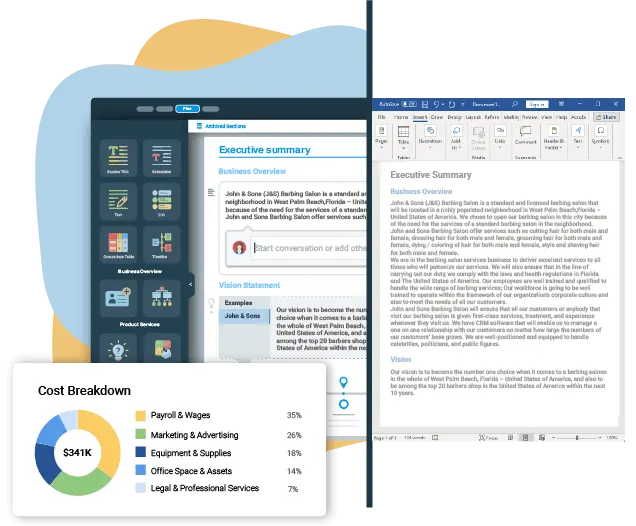
Are you planning to venture into a food delivery business? Well, there is no better time than now. In today’s world, where people order food in a few clicks, it outgrows the number of people who prefer wine-and-dine.
According to Forbes , the food industry market will be $200 billion strong by 2025. In the wake of the current pandemic, the online food delivery market has seen exponential growth and insane potential revenue capture across the globe.
Need a food delivery business plan? We’re here to help!
To start a food delivery business , the first thing you will need is a business plan.
A business plan bridges the gap between your thoughts, assumptions, expectations, and actual market, competition, and customer expectations. Determining financial needs, documenting them alongside a marketing plan, and building your revenue model, all of this become easier with a winning business plan.
Before you start writing your business plan for your new food delivery business, spend as much time as you can reading through some examples of services-related business plans .
Reading sample business plans will give you a good idea of what you’re aiming for and also it will show you the different sections that different entrepreneurs include and the language they use to write about themselves and their business plans.
We have created this sample food delivery business plan for you to get a good idea about how perfect a food delivery business plan should look and what details you will need to include in your stunning business plan.
Food Delivery Business Plan Outline
This is the standard food delivery business plan outline, which will cover all important sections that you should include in your business plan.
- Business Overview
- Our vision and mission statement
- 3 Year profit forecast
- Registered name and corporate structure
- Company Location
- Company Resources
- The Financing
- Startup cost
- Funding Required
- Products and services
- The Order Process For Both Sides
- Regulatory Requirements
- On-Demand Delivery Market
- The United States Market
- SWOT Analysis
- Threats Mitigation
- Post-Launch
- Average Salary of Employees
- Important Assumptions
- Brake-even Analysis
- Profit Yearly
- Gross Margin Yearly
- Projected Cash Flow
- Projected Balance Sheet
- Business Ratios
Say goodbye to boring templates
Build your business plan faster and easier with AI
Plans starting from $7/month

After getting started with upmetrics , you can copy this food delivery business plan example into your business plan and modify the required information and download your food delivery business plan pdf and doc file. It’s the fastest and easiest way to start writing your business plan.
How to write a food delivery business plan?
With so many things on the plate, the start point of the business plan may look blurry. You may want to hire a business plan writer, but remember that no person knows better about your business than yourself!
Using this food delivery business plan template, you don’t have to rely on an outsourced writer to write YOUR business plan. Also, you don’t have to put in immense effort in drafting the ideal outline.
What to include in a food delivery business plan?
Writing a business often seems overwhelming. However, here are a few tips that will help you outline your business plan.
- A business plan should typically have an executive summary – With this, you can have a primary understanding of your target group, business outline, and other administrative summaries.
- You can include a market analysis section that updates you with the latest statistics and trends in the on-demand delivery market.
- SWOT analysis is perhaps the most important section you can include to mitigate threats in the market, grab potential opportunities and outline the marketing and sales plan.
- Since the food-delivery business revolves around a delivery personnel network, make sure you have this section included in your plan. You could also add the restaurant partners and their set commission/fees.
- It all boils down to what and how are you going to invest. Thus, documenting your financial strategies, having a break-even analysis, and projecting cash flow is highly crucial.
The Quickest Way to turn a Business Idea into a Business Plan
Fill-in-the-blanks and automatic financials make it easy.
Download a sample food delivery business plan
Need help writing your business plan from scratch? Here you go; download our free food delivery business plan pdf to start.
It’s a modern business plan template specifically designed for your food delivery business. Use the example business plan as a guide for writing your own.
Related Posts
Cloud Kitchen Business Plan
Food Packaging Business Plan
Creating a Financial Plan for Startups
Best Business Plan Softwares
Delivery Service Business Plan
Courier Business Plan
About the Author
Upmetrics Team
Upmetrics is the #1 business planning software that helps entrepreneurs and business owners create investment-ready business plans using AI. We regularly share business planning insights on our blog. Check out the Upmetrics blog for such interesting reads. Read more

Turn your business idea into a solid business plan
Explore Plan Builder
Plan your business in the shortest time possible
No Risk – Cancel at Any Time – 15 Day Money Back Guarantee

Create a great Business Plan with great price.
- 400+ Business plan templates & examples
- AI Assistance & step by step guidance
- 4.8 Star rating on Trustpilot
Streamline your business planning process with Upmetrics .

Food Delivery Business Plan Template
Written by Dave Lavinsky
Food Delivery Business Plan
You’ve come to the right place to create your Food Delivery business plan.
We have helped over 1,000 entrepreneurs and business owners create business plans and many have used them to start or grow their Food Delivery companies.
Below is a template to help you create each section of your Food Delivery business plan.
Executive Summary
Business overview.
Dig In is a newly established food delivery business located in San Diego, California. The company will have an online platform that will also be able to be downloaded to users’ phones as an app. Users will be able to create a login profile and have instant access to all the local restaurants, bakeries, grocery stores, and fast food establishments.
The company will outsource its delivery to local drivers that will be employed as Independent Contractors, so they will be able to set their own schedule and hours. The drivers will receive orders through their app, select which user they want to deliver to, pick up the food order from the chosen establishment, and deliver to the user in a timely manner.
Dig In will reward users that frequently use their app. Users will be able to earn rewards and discounts for every order they place through the website or app. This will enable users to keep ordering their food delivery through Dig In.
Dig In will be owned and operated by John Hutchinson, a local entrepreneur who has been in the tech industry for over 15 years. He has developed other apps and platforms for tech companies and has started mapping out this business’ platform for over two years. At this point, he has perfected the technology and is ready to reveal the new local food delivery service in San Diego, California.
Product Offering
Dig In will provide food delivery services for the residents of San Diego. Residents who want the convenience of food delivered to their doorstep can download our app, find the establishment of their choice, and order whatever they’re craving. Most of our sales will come from orders to local restaurants, but we will also offer delivery from grocery stores and drug stores. Customers will be charged a small delivery fee or have the option to join our membership for reduced fees and special deals.
Customer Focus
Dig In will target all residents living in and around San Diego. It will appeal to students, families, retirees, white collar, blue collar, and government employees. Because our fees are moderately priced compared to other delivery apps, all income levels will be able to enjoy our delivery services.
Management Team
With his entrepreneurial and tech knowledge, John will be able to quickly fix any issues with the platform. He has also formed relationships with the most sought after restaurants, bakeries, grocery stores in the area to sign them up to be part of the food delivery platform. He has also hired a team of independent food delivery drivers to earn extra money by completing the food delivery orders.
Success Factors
The following success factors will set Dig In apart from the competition:
- Comprehensive List of Restaurants and Food Stores: Dig In will include a more comprehensive list of restaurants, grocery stores, and drug stores for customers to choose from.
- Membership Rewards: Dig In will allow users who create a profile to earn rewards for every order they place through its online platform. The rewards can be redeemed for delivery fee and order discounts.
- Faster Delivery Times: Dig In promises to have faster delivery times than its competitors.
- Pricing: Dig In’s price point for delivery fees is on par with its customers, if not cheaper.
Financial Highlights
Dig In is seeking a total funding of $500,000 of debt capital to launch. The funding will be dedicated for the design and development of the app, marketing expenses, working capital, and three months worth of payroll expenses. The breakout of the funding is below:
- Platform Development: $150,000
- Marketing and Brand Development: $100,000
- Three Months of Overhead Expenses (Payroll, Rent, Utilities): $150,000
- Working Capital: $100,000
The following graph outlines the pro forma financial projections for Dig In:

Company Overview
Who is dig in.
The company will outsource its delivery to local drivers that will be employed as Independent Contractors so they will be able to set their own schedule and hours. The drivers will receive orders through their app, select which user they want to deliver to, pick up the food order from the chosen establishment, and deliver to the user in a timely manner.
Dig In’s History
John Hutchinson has spent the last 2.5 years creating the food delivery online platform. As a tech entrepreneur, he knows how to map, develop, and implement an online platform. He has been instrumental in creating other apps and platforms for ecommerce companies and has created attractive and efficient apps for numerous Fortune 500 companies.
During the COVID-19 pandemic, John was on lockdown and working from his home. He used other food delivery services, but they were all slow, got his order wrong, or didn’t have a good selection of restaurants and establishments. It was then that he started developing his food delivery business and would implement and perfect all of the things that the competition suffered at.
Since incorporation, the company has achieved the following milestones:
- Mapped out the online platform for the food delivery business
- Developed the company’s name, logo, and website
- Approached multiple local restaurants, grocery stores, and bakeries to be a part of Dig In’s platform
- Determined necessary insurance and legal requirements
- Began recruiting key employees
- Written and developed the Delivery Driver processes and procedures.
Dig In’s Services
Dig In will provide food delivery services for the residents of San Diego. Residents who want the convenience of food delivered to their doorstep can download our app, find the establishment of their choice, and order whatever they’re craving. Most of our sales will come from orders to local restaurants but we will also offer delivery from grocery stores and drug stores. Customers will be charged a small delivery fee or have the option to join our membership for reduced fees and special deals.
Industry Analysis
The Food Delivery industry has grown substantially in the past five years. The convenience of ordering food from home has appealed to large demographics and now nearly everyone orders through a food delivery app at some point. Food delivery apps became a necessity during the COVID pandemic, and now they are a mainstay in modern society.
According to Grand View Research, the Food Delivery industry is set to grow at a CAGR of 18.7% from now until 2030. What helps this growth is the increasing popularity of smartphones and the expansion of these services overseas. Food delivery apps are becoming an essential tool in modern society, which makes this a great time to create a new food delivery service.
Customer Analysis
Demographic profile of target market.
Dig In will target millennials, young professionals, and college age students as this demographic is more comfortable with online delivery services and regularly use other similar apps such as Uber and Tasty.
However, we expect Dig In will appeal to other demographics as well as it will be a convenient and moderately priced option to get food delivered quickly. For example, we expect working parents will enjoy our app as well as elderly residents who have trouble leaving their home to go grocery shopping or go to a restaurant.
The precise demographics of the San Diego area are as follows:
Customer Segmentation
Dig In will primarily target the following customer profiles:
- Young professionals
- College students
- Working parents
Competitive Analysis
Direct and indirect competitors.
Dig In will be competing with other popular food delivery apps. A profile of each competitor is below.
Food at Your Door
Food at Your Door is an online and mobile platform for restaurant pick-up and delivery orders. The company is known for connecting over 30 million customers and processes on average about 500,000 daily orders in most cities around the United States. Customers are able to search for restaurants, order directly through the website or app, and then await their delivery from independent contractor drivers.
The company generates revenue from delivery fees paid by consumers as well as commissions paid by participating restaurants. Food at Your Door’s other offerings include a program for corporate food ordering, website design and hosting for participating restaurants, and point-of-sale integration services. The company is continuously updating its platform with innovative technological advancements to stay on top of the competition.
Fast Foodie
Fast Foodie is a technology company that connects people with the most popular food establishments in their neighborhoods. They enable local businesses to meet consumers’ needs of ease and convenience while enabling their independent contractors to generate an additional source of income. The company is passionate about transforming local businesses and dedicated to enabling new ways of working, earning, and living. They empower their local economies by ensuring that people have equal access to opportunities to reach their full potential.
Fast Foodie has expanded their database to include not only restaurants, but convenience stores, pet stores, grocery stores, and drug stores.
Ding Dong is an operator of an on-demand goods delivery platform that is intended to facilitate smooth delivery of essential goods. The company’s platform offers full-service and in-store shopper services through a network of independent shoppers with same-day delivery and pickup service of fresh groceries and everyday essentials. This enables users to select items from their favorite grocery stores and get them delivered almost instantly.
Ding Dong was the first online platform to expand their services and products by including anything that can be purchased at a local grocery store, convenience store, or drug store. The drivers/shoppers are required to ensure delivery during the selected timeframe that the user selects.
Competitive Advantage
Dig In offers several advantages over its competition. Those advantages are:
Marketing Plan
Brand & value proposition.
Dig In will offer the unique value proposition to its clientele:
- Comprehensive list of restaurants and grocery stores
- Membership rewards and specials
- Faster delivery times
- Moderately priced fee structure
Promotions Strategy
The promotions strategy for Dig In are as follows:
Social Media
Dig In will utilize the most popular social media platforms for ads since the majority of the clientele will be active on social media. The company will also have business accounts on each major platform to post regularly of food options that are available for delivery.
Collateral Material
Dig In will develop numerous collateral materials to have on hand to give out to potential customers at the local farmers markets, events, or restaurant or store events.
Website/SEO
Dig In will invest heavily in developing a professional website and app that displays all of the restaurant and store options the company will be able to deliver for. The company will also invest heavily in SEO so that the brand’s website will appear at the top of search engine results.
Billboards/Signage
Dig In will invest in attractive signage and billboards to increase the brand awareness of the local food delivery business.
Dig In’s fee structure will be moderate, so clients feel they receive great value when placing their food delivery orders.

Operations Plan
Operation Functions: The following will be the operations plan for Dig In.
- John Hutchinson will operate as the CEO of Dig In. In addition to running the general operations, he will oversee the app development and provide app support.
- John will hire 2-3 additional web engineers to run the website and app.
- John will hire 20-30 delivery drivers to work on an independent contractor basis.
- John will also hire an administrative team for accounting/bookkeeping, sales and marketing, and customer service support.
Milestones:
Dig In will have the following milestones complete in the next six months.
- 8/202X – Finalize app development
- 9/202X – Hire and train initial staff
- 10/202X – Kickoff of promotional campaign
- 11/202X – Launch Dig In
- 12/202X – Reach break-even
Financial Plan
Key revenue & costs.
Dig In’s revenues will come primarily from the fees it receives from the food delivery orders.
The delivery driver commissions, website platform fees, supplies, marketing, and labor expenses will be the key cost drivers of Dig In.
Funding Requirements and Use of Funds
Key assumptions.
The following table outlines the key assumptions required in order to achieve the revenue and cost numbers in the financials and pay off the business loan.
- Initial Number of Orders Per Day: 100
- Average Order per Customer: $25.00
Financial Projections
Income statement, balance sheet, cash flow statement, food delivery business plan faqs, what is a food delivery business plan.
A food delivery business plan is a plan to start and/or grow your food delivery business. Among other things, it outlines your business concept, identifies your target customers, presents your marketing plan and details your financial projections.
You can easily complete your Food Delivery business plan using our Food Delivery Business Plan Template here .
What are the Main Types of Food Delivery Businesses?
There are a number of different kinds of food delivery businesses , some examples include: Restaurant Delivery, Meal Kit Delivery, Grocery Delivery, and Veggie Box Delivery.
How Do You Get Funding for Your Food Delivery Business Plan?
Food Delivery businesses are often funded through small business loans. Personal savings, credit card financing and angel investors are also popular forms of funding.
What are the Steps To Start a Food Delivery Business?
Starting a food delivery business can be an exciting endeavor. Having a clear roadmap of the steps to start a business will help you stay focused on your goals and get started faster.
1. Develop A Food Delivery Business Plan - The first step in starting a business is to create a detailed food delivery business plan that outlines all aspects of the venture. This should include potential market size and target customers, the services or products you will offer, pricing strategies and a detailed financial forecast.
2. Choose Your Legal Structure - It's important to select an appropriate legal entity for your food delivery business. This could be a limited liability company (LLC), corporation, partnership, or sole proprietorship. Each type has its own benefits and drawbacks so it’s important to do research and choose wisely so that your food delivery business is in compliance with local laws.
3. Register Your Food Delivery Business - Once you have chosen a legal structure, the next step is to register your food delivery business with the government or state where you’re operating from. This includes obtaining licenses and permits as required by federal, state, and local laws.
4. Identify Financing Options - It’s likely that you’ll need some capital to start your food delivery business, so take some time to identify what financing options are available such as bank loans, investor funding, grants, or crowdfunding platforms.
5. Choose a Location - Whether you plan on operating out of a physical location or not, you should always have an idea of where you’ll be based should it become necessary in the future as well as what kind of space would be suitable for your operations.
6. Hire Employees - There are several ways to find qualified employees including job boards like LinkedIn or Indeed as well as hiring agencies if needed – depending on what type of employees you need it might also be more effective to reach out directly through networking events.
7. Acquire Necessary Food Delivery Equipment & Supplies - In order to start your food delivery business, you'll need to purchase all of the necessary equipment and supplies to run a successful operation.
8. Market & Promote Your Business - Once you have all the necessary pieces in place, it’s time to start promoting and marketing your food delivery business. This includes creating a website, utilizing social media platforms like Facebook or Twitter, and having an effective Search Engine Optimization (SEO) strategy. You should also consider traditional marketing techniques such as radio or print advertising.
Learn more about how to start a successful food delivery business:
- How to Start a Food Delivery Business

Are you Marketing Agency ? Join our expanding partner network and grow together 🚀
- How-To-Guides
- Small Business
Online Food Delivery Business Plan for Startups: Step-by-Step Guide
Table of Contents Hide
Step 1: draft a business strategy for food delivery, step 2: decide what makes you special, step 3: plan the logistics, step 4: budget , step 5: assemble the team of your dreams, step 6: a package choice should reflect your brand, step 7: conduct a practice run, step 8: get your food delivery business off to a good start, step 9: expand and build your business, step 10: applications for restaurants, customers, and delivery personnel.
The customer base has evolved. Their eating patterns, food distribution systems, and food demand have all changed. These stats show how to Increase client retention rates and offer timely delivery; most meals are delivered to homes. There were many orders on Friday, Saturday, and Sunday. To overcome these difficulties, you must develop a comprehensive Online Food Delivery Business Plan for Startups . The strategy is much more than just a blueprint or executive summary.
The following are some ways that a well-written, effective online food delivery business strategy may help you:
- Reveals information about your industry, primary competitors, target market, food delivery platforms, and trends.
- The food sector should analyze SWOT to learn more about its opportunities, threats, and strong points.
- It is a benchmark for managing a business and choosing the appropriate product price.
- You could learn about the need for additional team members, resources, and equipment to help you achieve any key aims or corporate goals.
- Supports the food industry’s financial accounts, cash flow statements, revenue models, competitive tactics, and investment strategy.
Pay close attention to these critical figures before joining the food delivery sector.
The market for Internet food delivery has quadrupled in size since 2017. 57% of millennials favor having a restaurant deliver their food. Customers are willing to pay more for services with faster delivery in 33% of cases. According to 60% of restaurant owners & operators, offering delivery increases income. Restaurant sales volume grew from 10% to 20% due to working with outside delivery companies. Due to the easy and pleasant experience, 70% of consumers prefer to buy deliveries online. The office food delivery market’s “ghost kitchens” or “cloud kitchens” segment will be worth $1 trillion by 2030.
Steps for Online Food Delivery Business Plan
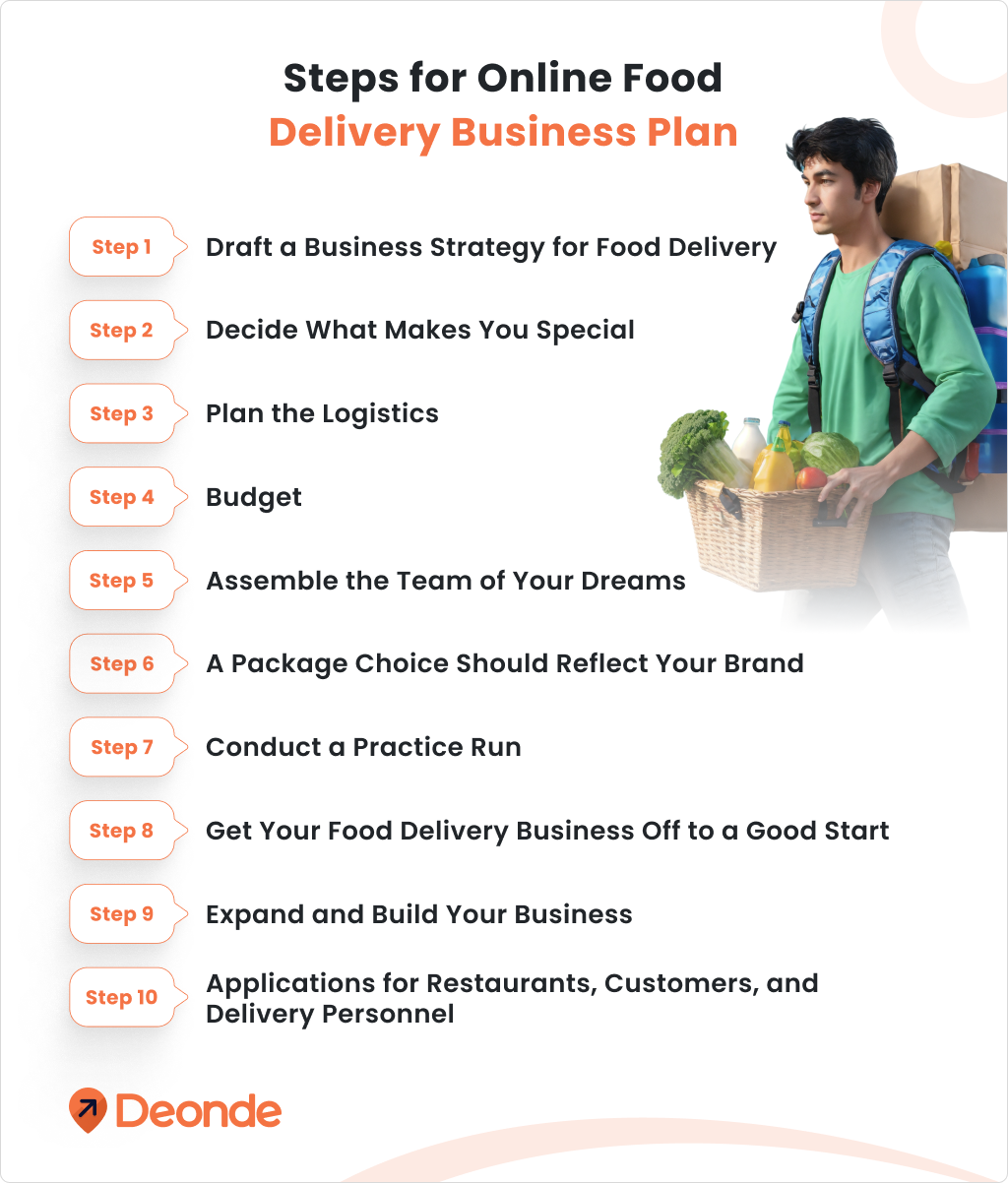
Craft a food delivery startup business plan before menu creation. A solid blueprint ensures success and guides your special dish development. These are the essential components for creating a successful food delivery business plan ; flavor or changes may always be added when you have an idea.
Choose a unique approach to help your business stand out. Local Roots For instance, the farm delivery service in New York City only provides food from “hyper-local” farms, which are two hours from the city. Researching the market is necessary. Use meal delivery services to get takeout from local restaurants and to investigate your rivals. Find out where they fall short so you may make up for it by offering a particular dish, quicker service, or a different cuisine.
A significant aspect of running a food delivery business is logistical management. This step will tell you how to start a food delivery business . Take the following steps right away:
- Find a kitchen : Your local laws must allow you to make meals in your home to hire a commissary or commercial kitchen. If you’re adding restaurant delivery to an already-existing eating establishment, reserve a particular kitchen area for delivery orders. You’ll require a spot where delivery personnel may take orders without interfering with dine-in activities.
- Make a map of your neighbourhood : Start subtly. You can always increase once you know how long deliveries take and how many orders your drivers can handle simultaneously. If you’re starting a weekly subscription service, like a meal prep or grocery delivery business, consider dividing your territory into manageable zones. For instance, Tomato Mountain Farm distributes to each zone on a specific day of the week. Consequently, deliveries are more efficient and have a lower carbon footprint.
See Also: Why is White Label Food Delivery App Ideal for your Business?
- Select a fleet: You can brand or wrap the outside if you have your delivery truck or vehicles. Owning a car also makes paying for repairs and gas easier. But the expense is significant. You can use your driver’s car if you cannot acquire or rent a delivery vehicle immediately. To ensure that the food is transported securely, the only thing left to do is outfit them with accessories like insulated bags or ice packs.
- Know when reverse logistics are necessary : Reverse logistics collects customer items and transports them to your location or elsewhere. Meal delivery services like Oco Meals employ reverse logistics to gather recycled food containers.
Investigate competitors in the industry for logistical insights, take note of their processes, take advantage of their flaws, look for mentorship from seasoned food entrepreneurs, and consult our food warehousing guide for storage ideas.
Once you understand your market and logistical requirements, budgeting, income, and demand forecasting are necessary. Using your expected earnings as a guide, calculate your revenue. Projection aids risk assessment, break-even analysis, and upfront expense tolerance. Sum expenses: supplies, vehicles, upfront and 3-year costs, petrol, tolls, maintenance, licenses, payroll. Comprehensive financial planning is crucial.
Maintain financial records and monitor billing cycles. If 30-day expenditures exceed 30-day revenue, cash flow becomes an issue. To relieve concerns about cash flow, think about paying for meals weekly in advance for three months.
The key to starting a successful food delivery company is assembling a committed staff that shares your goals. Put happy employees first since they produce more effectively and will help you maintain profitability during the break-even phase. Choose delivery workers with strong customer service backgrounds crucial for effective client interactions. Communication abilities are more valuable than map-reading skills when using route optimization technologies. Drivers frequently represent your company in person, so choosing ones who can make an excellent first impression is crucial.
If the packaging and style of your deliveries match your brand, it could help you get more return customers. Suppose your market analysis showed an absence of sustainably produced food that could be supplied locally. You start a delivery service for meal packages made with organic and sustainable ingredients. Choose recyclable or biodegradable cartons because they align with your business’s positioning and marketing strategies.
Even if you’re not building an eco-focused business, most clients prefer to place orders from delivery services that utilize recyclable or biodegradable packaging. Even the containers you use to transport food should contribute to building a recognizable brand for your business.
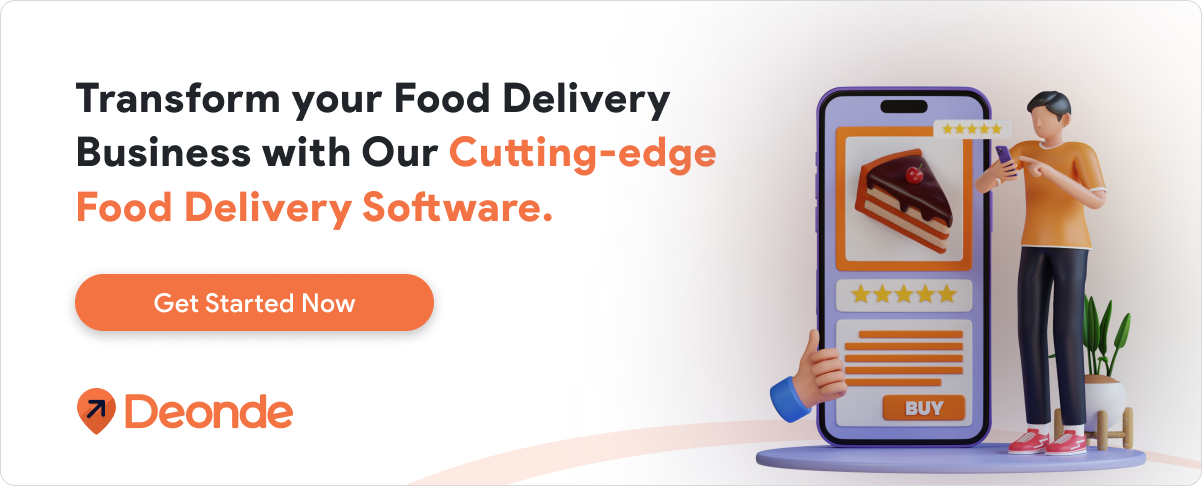
Start your business with a modest clientele so your crew may practice and work out any issues in your physical operation.
Observe how long it takes the drivers to deliver to different places and how much time they require at each stop. Utilize the knowledge you gain from conducting a test run to enhance your routing and scheduling. The more detailed information you have, the better your capacity plan will be, and the easier it will be to scale operations when demand rises. Ask potential customers for feedback on the costs, features, menu options, and services they value throughout your trial run.
Want to know how to start a food delivery business? The best way is to initially spend less money on marketing but get the word out. According to Nielsen’s Global New Product Innovation Report, 50%+ % of consumers discover new goods via friends and family. Make it easier for happy customers to tell their friends about your company since word-of-mouth promotion is a powerful tool. Include a “refer a friend” button on your website, app, and emails. You may inspire your target market to tell their friends about your business by offering a referral discount or rewards program.
Leverage social media for engagement. Pose quick, thought-provoking questions to spark conversations and excitement among your audience. Consider the case when you provide Mexican food. “Taco Tuesday or Torta Tuesday? ” or something like that. I can only display text; I cannot display photos. Which one do you prefer? Increased visibility due to possibilities for comments. Attract a larger audience. Cooperate with regional influencers to effectively promote your business.
An app will be your most valuable weapon in this conflict. Therefore, developing the best mobile app for online or home food delivery business plans should be one of your top priorities. However, the mobile app paradigm for online food delivery differs substantially from others. Your food delivery app business plan must outline three distinct versions of your organization.
As well as a dashboard for management for the principal business owners. Another proposal for a food delivery solution is being developed through Cloud Kitchen. It enables individuals with modest Food Delivery Business Ideas to prepare meals at home and assist neighborhood residents.
Creating mobile apps with cloud integration helps giant corporations access the largest audience, as it helps small businesses. Thanks to the development of cloud kitchen applications , you can efficiently oversee the operations of your restaurant.
Newcomers to the food industry face time-consuming planning key components explored for drafting a robust business strategy. Understand industry stats before applying business principles; grasp online resources’ importance for running a profitable food delivery venture despite using templates. Newcomers to the food industry face time-consuming planning. Key components explored for drafting a robust business strategy. Understand industry stats before applying business principles; grasp online resources’ importance for running a profitable food delivery venture despite using templates. If you are looking for a Food Delivery Software ? At Deonde, we offer the best readymade food delivery app solution to provide you with an amazing app built for your food business.

Very clear and detailed explanation. Thanks its helpful.
Leave a Reply Cancel reply
Your email address will not be published. Required fields are marked *
Related Posts
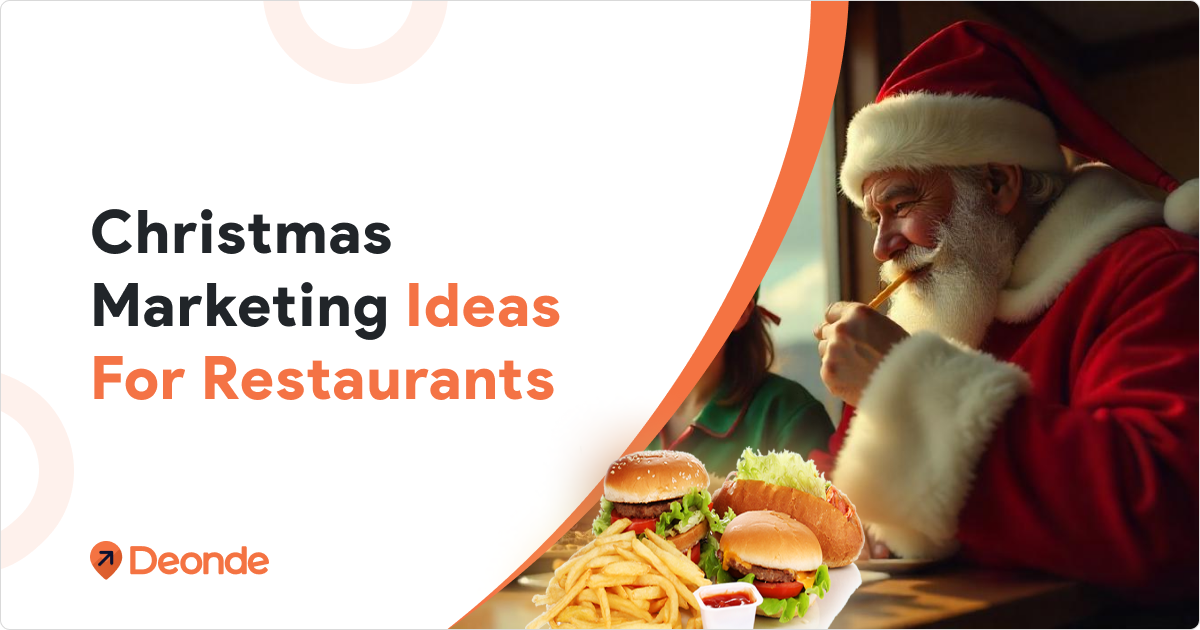
- Tips & Tricks
Christmas Marketing Ideas for Restaurants: Boost Your Sales This Holiday Season

- Business Model
A Quick Guide to the Q-Commerce Business Model
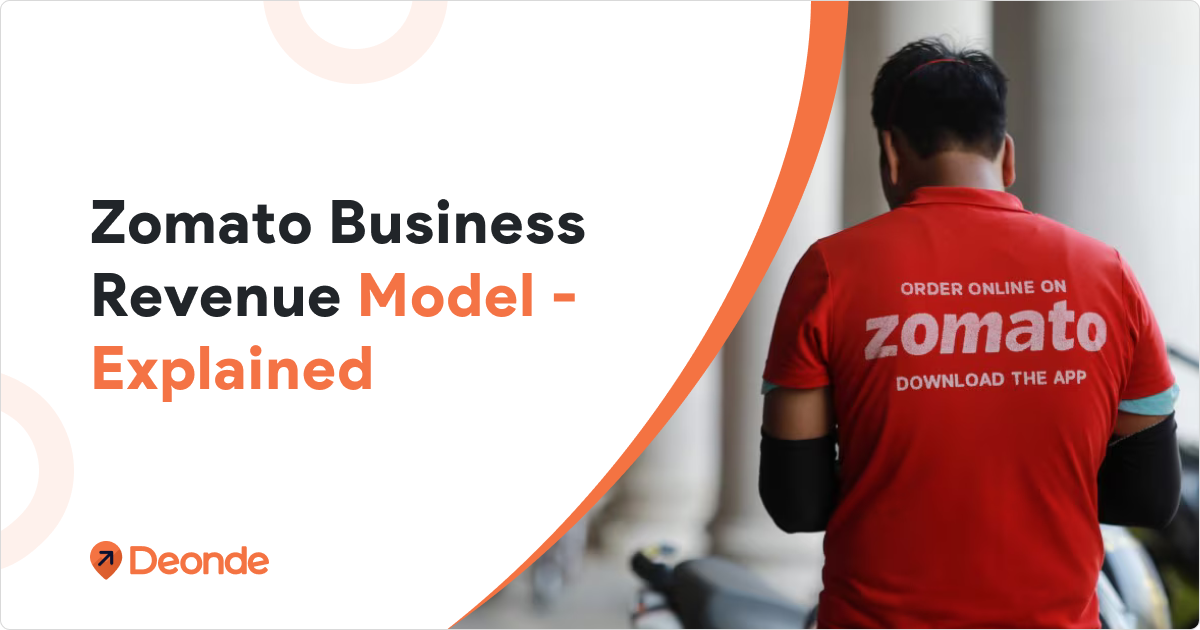
Deep dive into Zomato Business Model
Ultimate Guide on Online Food Delivery Business Plan
- By Rakesh Patel
- Last Updated: May 30, 2024
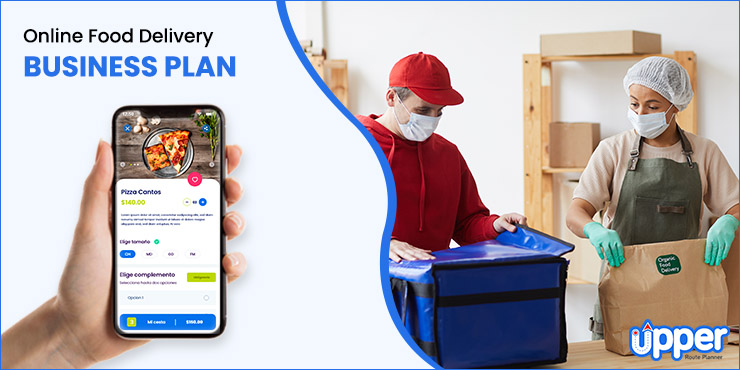
As a food delivery service, you will be expanding convenience and choice for your existing and potential customers. You will be working towards making it easier for them to order a wide variety of food from various restaurants.
In the last few years, there have been huge changes in the food delivery market . These changes have come into effect due to:
- Increasing demand and competition;
- Competitive prices;
- The rise of digital technology;
- Evolving customer behavior; and
At the time of creating a food delivery business plan , you may be required to consider several aspects in advance. In this blog, we will help you create an effective food delivery plan for small businesses in the online food delivery sector.
Forget Spaghetti Routes, Optimize Routes for Your Entire Team with Upper
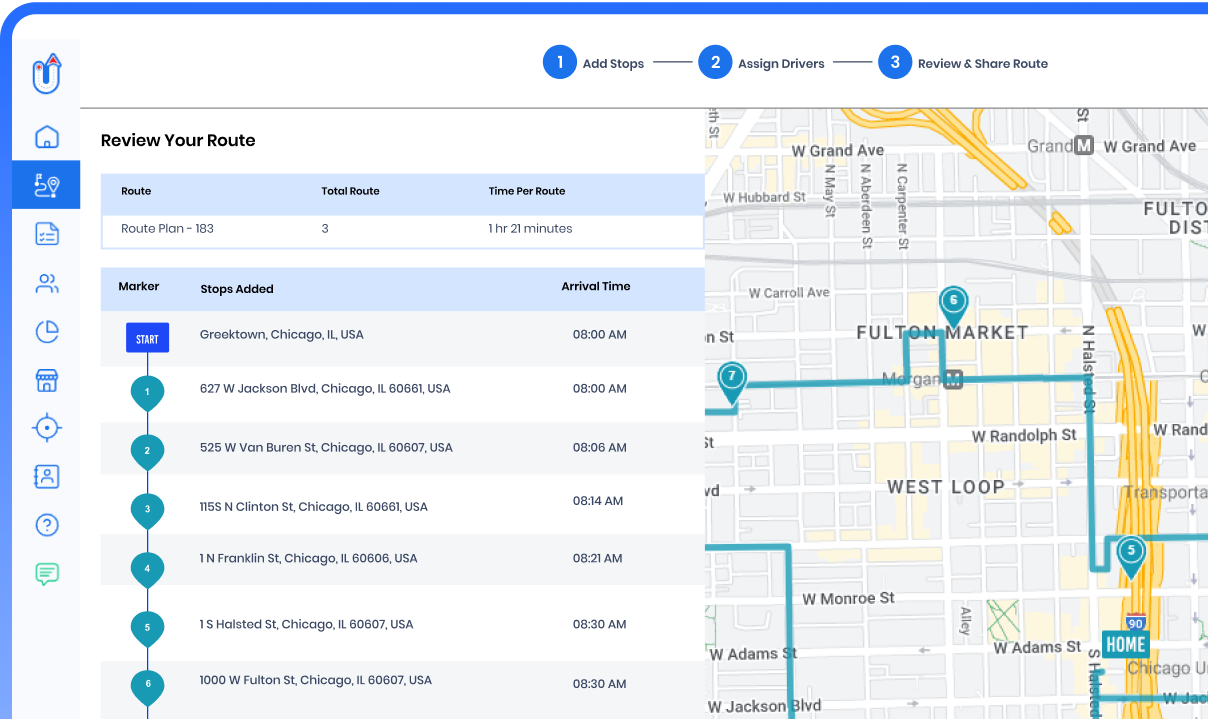
Table of Contents
Why Do You Need a Food Delivery Business Plan?
Key statistics to observe before entering the food delivery market, different food delivery business models, how to write a food delivery business plan, let upper help you grow your own food delivery business.
The customers have evolved. Their demand for food options, types of food delivery, and behaviors have changed. These points show how:
- Offer great speed of delivery and boost customer retention rate;
- Most meals are ordered from & delivered to homes;
- High volume of orders on Friday, Saturday, and Sunday.
In order to tackle these challenges and many others, you need to formulate a detailed food delivery business plan and affordable prices. The plan is not only an executive summary or roadmap, it is much more than that, incorporating advanced technology to meet these evolving needs.
Here’s how a well-developed winning business plan can help you:
- Offers an understanding of your industry, key competitors, target audience, food delivery platforms, and trends.
- Conducting a SWOT analysis for the food industry and getting insights on your strengths, weaknesses, opportunities, and threats.
- Works as a benchmark on how to conduct the business and know average prices for your products.
- You can find out the requirements of new members, tools, and equipment to help you reach any major goals or business goals.
- Helps with cash flow statements, financial statements, competitive strategies, and revenue models of the food business along with investment strategy.
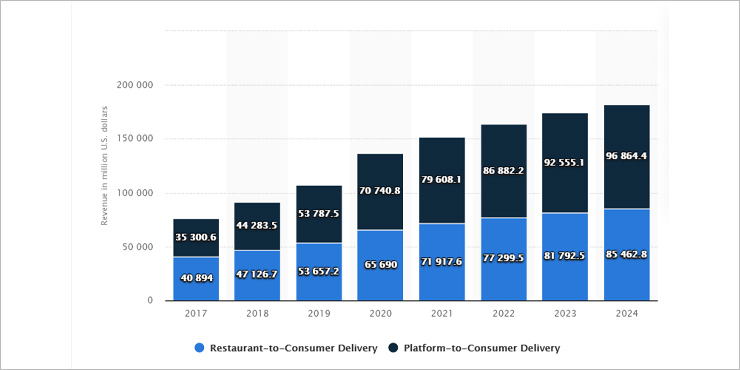
Source: Statista
- The global revenue in the online food delivery segment has doubled since 2017.
- 57% of millennials prefer to have restaurant food delivered.
- 33% of consumers are willing to pay higher fees for faster delivery services.
- 60% of restaurant owners & operators said that offering delivery generated incremental sales.
- Joining hands with third-party delivery services has raised restaurant sales volume from 10% to 20%.
- 70% of consumers prefer to place delivery orders online for a seamless robust experience .
- Ghost kitchens or cloud kitchens are going to be an office food delivery industry worth $1 trillion by 2030.
When you are ready to create a plan, you must know which business model you will acquire and how it will benefit you. Business models should be considered based on what are your requirements. Basically, it helps you choose which services you will offer to your target audience including strategic locations and operational cost. While doing so, you should decide whether you will run a food store or an online food delivery service business.
Here are different types of popular food delivery business models .
1. Order Only
This type of food delivery is followed by food delivery companies like Grubhub. These services only function as a software layer between the standard restaurant and the customers. Order-only platforms like Grubhub & Postmates have experienced remarkable growth.
This model becomes ideal for those who want to provide on-demand services. In fact, it is the best way to customer contact more easily. This business model will act as a medium between your restaurants and online services. Hence, making it easier for online users to take benefit of online purchase of food. This is why so many food business owners prefer to consider online order requests.
By opting for an order-only business model, your main job will be to deliver food to the buyer. In this process, the business cum restaurant will earn a commission of 10-15% for every order request they receive.
2. Order & Delivery
Apps like DoorDash , UberEats, and Deliveroo are food delivery platforms that bring in extra orders to restaurants in the form of takeaway and delivery. The apps manage the deliveries for these restaurants using their fleet of independent drivers.
It is quite different than what we understood in the previous model. In simple terms, the delivery process is not directly connected to restaurants. In fact, you need to hire a third-party delivery service that can provide timely delivery to the customer’s doorstep. Delivery service providers jointly work with the local restaurants to provide quicker meal deliveries or drinks to customers, but they also put on extra charges for received orders.
This order and delivery model also comes up with challenges that you should look at before acquiring it completely. Since you are handing over the delivery duties to another party, they should store the food at a consistent temperature. If not done, food may not have the same taste and freshness. Thus, you need to put a systematic delivery system.
3. Fully Integrated
Fully Integrated delivery businesses develop their apps using which customers can get meal deliveries from cloud kitchens to the ideal location. These popular food delivery apps focus on convenience and direct experience to consumers.
It is usually preferred by startup restaurants or family businesses where they can prepare meals and deliver them to the food buyer. Business owners opting for a fully integrated model only serve in a specific service region. They also collaborate with chefs to provide a different range of foods and a better quantity of food. Going for this model, you need to pay for the cost of equipment which means your operational cost may raise.
With this model, you are likely to provide quicker deliveries and may find it easier to adjust the delivery schedule as per consumers’ requirements. Moreover, in the competitive delivery market, the ability to optimize delivery routes can give your business a significant edge.
Here are the handy tips to apply while creating a new plan to make a successful food delivery business.
Do In-depth Industry Analysis
Identifying your usp.
Make something memorable: A good USP is one that is memorable, makes a case against existing products, and offers valuable interaction with customers. How will you embody your USP in your products, services, user experience, and office food delivery brands?
What are you doing differently?: In order to identify your USP, look at the direct competitors, and indirect competitors and find out what you are doing differently from your major competitor. An on-demand delivery market analysis, customer analysis, and knowing the relevant market size will be helpful.
Notice patterns in the market: If you notice a pattern in the market about features or aspects missing in the competitors, note that down and see if you can offer those features or food services.
Talk to your customers: Conduct a thorough survey of the food delivery market. Talk to your loyal customers or different types of customers and see what they have to tell you. It will help you find out what’s working for your food delivery model and what’s not working.
Developing your USP
Don’t try to be the best: Don’t try to be the best brand or product out there. Just carve out a niche for your own business in the food delivery industry and stick to it. You will not be concerned about the competition once you make the rules yourself.
Who are you targeting?: Be particular about who your target market is. Focus on that particular audience. It will help you achieve corporate sales goals and keep your brand image consistent because you can’t be everything to everyone.
Develop a personality: Incorporating a strong personality into your USP will make your product more memorable. Once you infuse a personality into your brand or product, it will be difficult for others to not notice you.
Create your USP
Write things down: Create a list of all potential differentiators. You will find these points if you do a thorough actual market trends. Wrap these points around your advertising strategies, business strategies, and detailed strategies.
What are your unique angles?: Pitch your most unique angles against the customer’s needs. Learn about their pain points as it will help set long-term goals.
Compile data: Collect all the data you receive from your consumer and market research and integrate it with your product, service, marketing plan, and business idea.
Prepare a Financial Plan
Your budget will be dependent on your approach and the food delivery business model you choose. Your approach to market and growth strategy will also be an important factor in the total operational costs or key costs you incur.
As an office food delivery company, you can choose if you will be building an in-house tech platform and support or whether you will be dependent on third-party services for the same. It is an expensive thing to integrate advanced technology in-house. You need a great amount of investment just to get started. Figure out a budget considering all the major factors of your business model, revenue model, and food delivery marketing plan. You will have several financing options to choose from:
- PayPal Working Capital Loan: PayPal offers short-term loans to help small businesses grow. The application process for a PayPal Working Capital Loan is quick and easy and there are no extra fees and prepayment penalties.
- Credit Cards/Personal Loans: Business credit or personal loans can be acquired to fuel the daily functions of your business. Small business owners can easily qualify for credit cards and personal loans.
- SBA Loans: You can apply for a small business loan under the Small Business Administration advantage program. SBA offers small business financing with lower interest rates compared to other options. SBA Microloans can be used for inventory, supplies, working capital, and machinery.
- Government Grants & Subsidies: There are several State and Federal Government grants and subsidies available to businesses. In recent times, the government has helped several small and medium-sized businesses to revive their existing food delivery business or any type of meal kit delivery startups.
- Crowdfunding: Reach out to investors and financial institutions to see if you are eligible for a loan. There are great opportunities for businesses with innovative ideas. An online platform where innovative businesses are identified and valued is KickStarter and Indiegogo .
Resource and team management
- Acquiring New Equipment & Vehicles: Decide which major sources and equipment or standard kitchen utensils you will require for your standard food delivery company, considering cash flow. Do you need bikes, box trucks, or cargo vans? Depending on your business model and budget, plan out the lease or acquisition of vehicles and new equipment to gain a competitive advantage.
- Hiring Drivers: You will have to choose whether you want to hire contract drivers or full-time drivers. It will depend on your delivery business model. Look for drivers on industry-specific job boards. Make use of social media platforms to search for suitable drivers, while considering payroll expenses.
- Training Drivers: A thorough training will have to be provided for your newly hired drivers, whether they are involved on a full-time basis or a contract.
- Train your entire staff for your last mile delivery process;
- State their responsibilities as a delivery driver;
- Form a strong management team to work with a customer-centric mindset;
- Give access and train management staff for the tools and equipment they will be using on the job;
- Help them establish excellent customer service culture;
- Train drivers to prioritize their health and safety over the package from time to time.
Generate an operations plan
- Plan Your Last Mile Process: Your last mile delivery process is the front-end process that is often trackable and visible to the customers. Try to make this process as efficient as possible. A month of operation on customer-facing troubles always be crystal clear and should be carried out without any uncertainty.
- Simplify the Process by Employing the Right Tools: One major way of simplifying your last mile delivery process is to cut down planning and optimization time by eradicating a manual procedure. In order to automate these steps, you will have to integrate a food delivery planner and route optimization software in your last mile delivery process.
- Executive Summary: As a food business owner, you will be employing multiple drivers and creating multiple routes for them daily. You will need to be prepared for every unexpected challenge. Create a summary of how your food delivery operations will take place. You can give an overview and discuss the business model with your delivery team. Address your marketing team to work on key issues that help them attract target customers.
Developing a meal delivery business plan can be challenging. There are quite a few aspects that need to be considered seriously. The increasing competition in the office food delivery services industry only makes it more difficult for new entrants to make space for themselves.
With a reliable food delivery business plan, you can never go wrong. Make sure you consider all the important pointers mentioned above before setting up your own online food delivery system.
One of the most important aspects, as mentioned above, is planning and optimizing your delivery routes. Without proper optimization and a strong last mile delivery setup, you will not be able to gauge an audience in the market.
Use a delivery management software like Upper to make sure your routes are optimized and you save the delivery time. It keeps an eye on your personal savings while achieving more deliveries per route.
Utilize Upper to Automize Food Deliveries
Preparing a food delivery business plan? Why not include the best route optimization for getting faster delivery routes. Start using Upper for better delivery management and timely deliveries.
Offices food delivery services are booming currently. The rise in quarantine and lockdown restrictions has people locked up in their houses. It has given a huge boost to online food ordering. Most businesses recorded the highest revenue only because of online food ordering and delivery.
Food delivery businesses either prepare the cooked food on their own or partner with the entire restaurant to handle food deliveries on behalf of them. These are the two main ways in which food delivery businesses operate. A food business that prepares and delivers on its own either receives orders through its website, third-party mobile app, or phone call.
You can start accepting orders for your homemade food online through your social media platforms, website, or phone calls. Many small businesses that sell homemade food accept orders through phone calls or online business plan software that helps them sell and deliver their food to the customers, along with food delivery route planning software .
Food delivery services businesses like DoorDash, Grubhub, and Postmates are some of the most popular food delivery services having the potential market share in the online food delivery service industry.
If you are new to the food industry, it means you need to work hard for business planning. We discussed significant factors that should be considered while making your own business plan. So, all in all, you must analyze the current market statistics that may help you make a robust operations plan. For a new player like you, it becomes necessary to understand business models before implying them to your business.
Successful online business may not be possible even if you finish your food delivery business plan template, as you may need support from online tools. Upper is one such tool that streamlines your food delivery services and helps you reach the food buyers’ locations easily. You can manage unlimited food deliveries with route planning software . Import your data, optimize them, and hit the dispatch button with just a few clicks. Book a demo with us to get more insights into Upper Route Planner.

Rakesh Patel, author of two defining books on reverse geotagging, is a trusted authority in routing and logistics. His innovative solutions at Upper Route Planner have simplified logistics for businesses across the board. A thought leader in the field, Rakesh's insights are shaping the future of modern-day logistics, making him your go-to expert for all things route optimization. Read more.
Related Posts
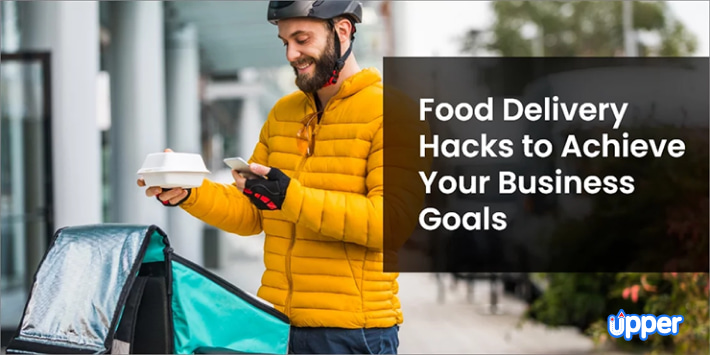
6 Expert-Proven Food Delivery Hacks for Business Success in 2024
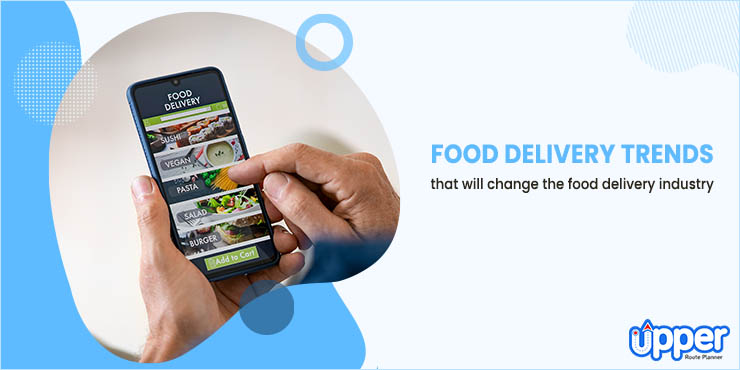
Food Delivery Trends and Statistics Shaping the Future of the Food Industry
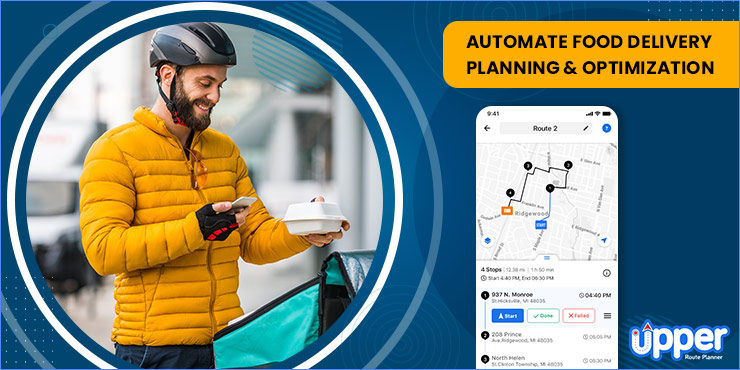
How To Automate Food Delivery Process With Route Planning & Optimization?
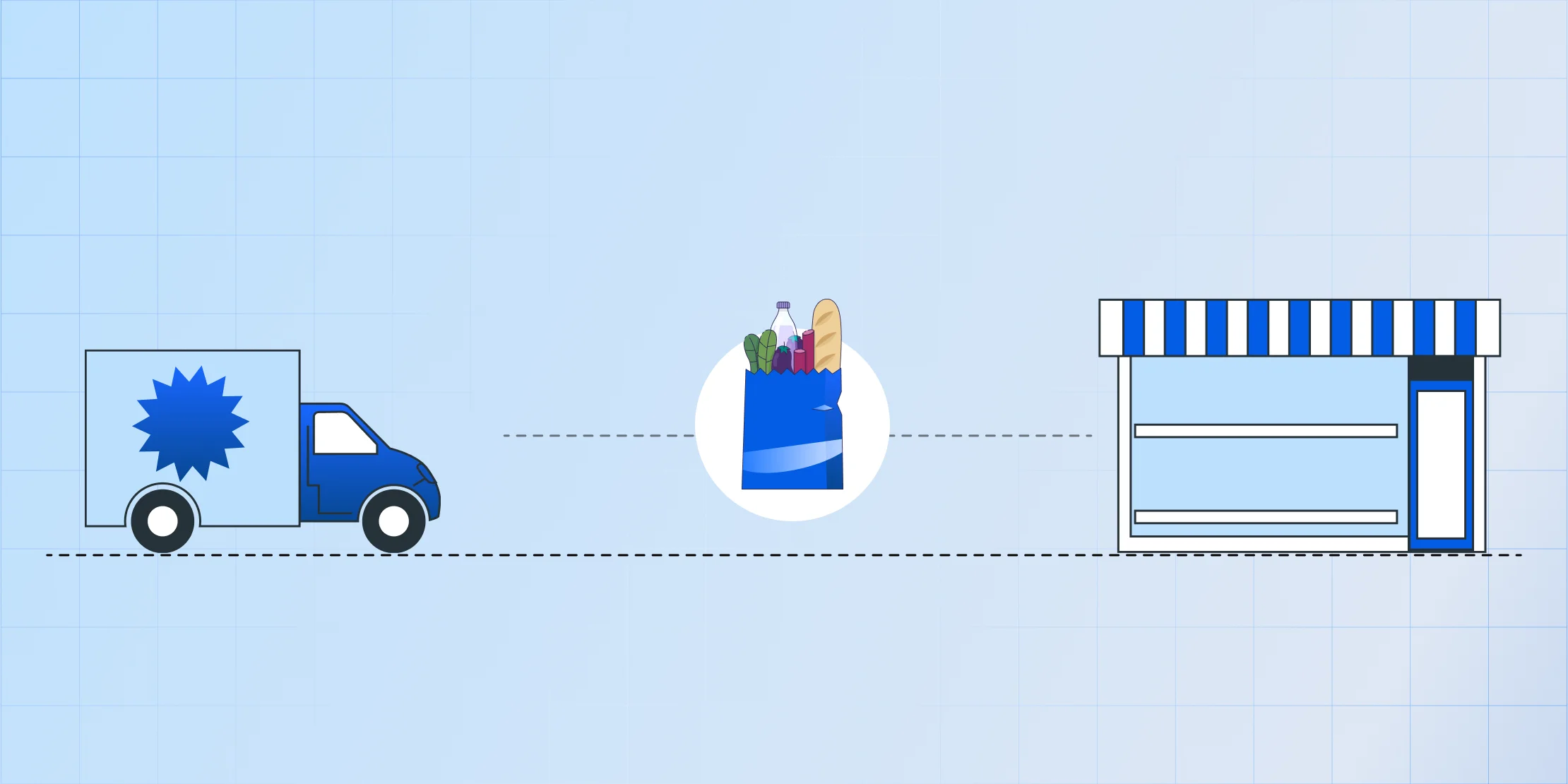
A Complete Guide on Food & Beverage Distribution
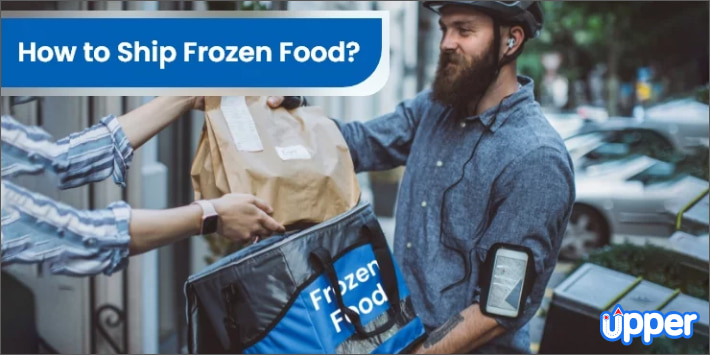
Ultimate Guide: How to Ship Frozen Food Safely and Effectively
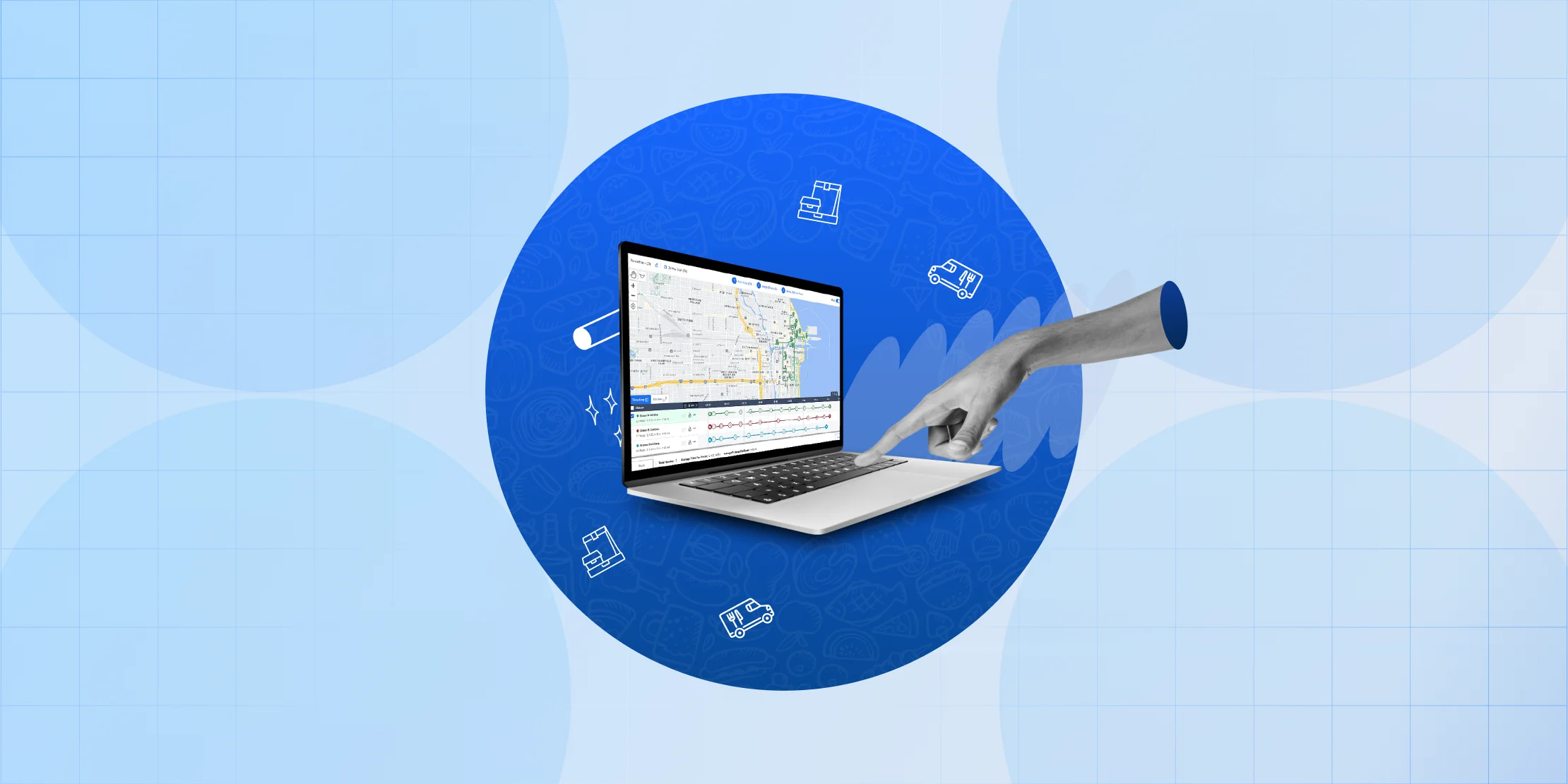
7 Best Food and Beverage Distribution Management Software
Sign Up with Upper Route Planner and automate your daily business process route planning, scheduling, and optimizing!
Grab a FREE Trial of Upper
- Plan routes with hundreds of stops in a minute
- Schedule routes months in advance
- Collect reliable proof of delivery
- Track drivers live for real-time updates
- Experience unparalleled customer support
Grab a FREE Trial of Upper TODAY!
- Schedule routes in advance for weeks
- Collect proof of delivery to maintain accountability
- Experience 24/7 customer support
- Smart reporting to get real-time insights

Food Delivery Business Plan Template
Written by Dave Lavinsky
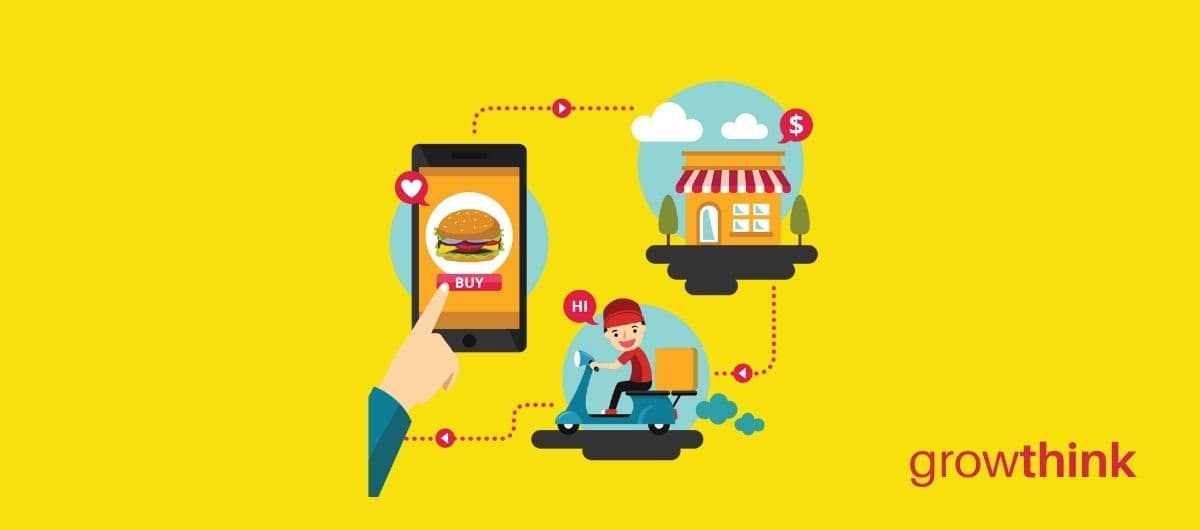
Food Delivery Business Plan
Over the past 20+ years, we have helped over 1,000 entrepreneurs and business owners create business plans to start and grow their food delivery businesses. On this page, we will first give you some background information with regards to the importance of business planning. We will then go through a food delivery business plan template step-by-step so you can create your plan today.
Download our Ultimate Business Plan Template here >
What is a Food Delivery Business Plan?
A business plan provides a snapshot of your food delivery business as it stands today, and lays out your growth plan for the next five years. It explains your business goals and your strategy for reaching them. It also includes market research to support your plans.
Why You Need a Business Plan for a Food Delivery Service
If you’re looking to start a food delivery business, or grow your existing food delivery business, you need a business plan. A business plan will help you raise funding, if needed, and plan out the growth of your food delivery business in order to improve your chances of success. Your food delivery business plan is a living document that should be updated annually as your company grows and changes.
Sources of Funding for Food Delivery Businesses
With regards to funding, the main sources of funding for a food delivery business are personal savings, credit cards, bank loans and angel investors. With regards to bank loans, banks will want to review your business plan and gain confidence that you will be able to repay your loan and interest. To acquire this confidence, the loan officer will not only want to confirm that your financials are reasonable, but they will also want to see a professional plan. Such a plan will give them the confidence that you can successfully and professionally operate a business. Personal savings is the other most common form of funding for a food delivery business. Personal savings and bank loans are the most common funding paths for food delivery businesses.
Finish Your Business Plan Today!
How to Write a Food Delivery Business Plan
If you want to start a food delivery business or expand your current one, you need a business plan. Below are links to each section of your food delivery business plan template:
Executive Summary
Your executive summary provides an introduction to your food delivery business plan, but it is normally the last section you write because it provides a summary of each key section of your plan.
The goal of your Executive Summary is to quickly engage the reader. Explain to them the type of food delivery business you are operating and the status. For example, are you a startup, do you have a food delivery business that you would like to grow, or are you operating a food delivery business in multiple regions?
Next, provide an overview of each of the subsequent sections of your plan. For example, give a brief overview of the food delivery industry. Discuss the type of food delivery business you are operating. Detail your direct competitors. Give an overview of your target customers. Provide a snapshot of your marketing plan. Identify the key members of your team. And offer an overview of your financial plan.
Company Analysis
In your company analysis, you will detail the type of food delivery business you are operating.
For example, you might operate one of the following types of food delivery businesses:
- Restaurant Delivery : this type of business delivers food prepared by a restaurant to the consumer.
- Meal Kit Delivery: this type of business delivers pre-made meal kits.
- Grocery Delivery: this service delivers grocery orders, and may or may not include personal shopping.
- Veggie Box Delivery : this type of service delivers boxes of vegetables and other produce, either as part of a CSA or another type of program.
In addition to explaining the type of food delivery business you will operate, the Company Analysis section of your business plan needs to provide background on the business.
Include answers to question such as:
- When and why did you start the business?
- What milestones have you achieved to date? Milestones could include the number of customers served, number of positive reviews, total number of meals or orders delivered, etc.
- Your legal structure. Are you incorporated as an S-Corp? An LLC? A sole proprietorship? Explain your legal structure here.
Industry Analysis
In your industry analysis, you need to provide an overview of the food delivery industry.
While this may seem unnecessary, it serves multiple purposes.
First, researching the food delivery industry educates you. It helps you understand the market in which you are operating.
Secondly, market research can improve your strategy, particularly if your research identifies market trends.
The third reason for market research is to prove to readers that you are an expert in your industry. By conducting the research and presenting it in your plan, you achieve just that.
The following questions should be answered in the industry analysis section of your food delivery business plan:
- How big is the food delivery industry (in dollars)?
- Is the market declining or increasing?
- Who are the key competitors in the market?
- Who are the key suppliers in the market?
- What trends are affecting the industry?
- What is the industry’s growth forecast over the next 5 – 10 years?
- What is the relevant market size? That is, how big is the potential market for your food delivery business? You can extrapolate such a figure by assessing the size of the market in the entire country and then applying that figure to your local population.
Customer Analysis
The customer analysis section of your food delivery business plan must detail the customers you serve and/or expect to serve.
The following are examples of customer segments: working professionals, university students, families and retirees.
As you can imagine, the customer segment(s) you choose will have a great impact on the type of food delivery business you operate. Clearly, working professionals would respond to different marketing promotions than retirees, for example.
Try to break out your target customers in terms of their demographic and psychographic profiles. With regards to demographics, include a discussion of the ages, genders, locations and income levels of the customers you seek to serve. Because most food delivery businesses primarily serve customers living in their same city or town, such demographic information is easy to find on government websites.
Psychographic profiles explain the wants and needs of your target customers. The more you can understand and define these needs, the better you will do in attracting and retaining your customers.
Finish Your Food Delivery Business Plan in 1 Day!
Don’t you wish there was a faster, easier way to finish your business plan?
With Growthink’s Ultimate Business Plan Template you can finish your plan in just 8 hours or less!
Competitive Analysis
Your competitive analysis should identify the indirect and direct competitors your business faces and then focus on the latter.
Direct competitors are other food delivery businesses.
Indirect competitors are other options that customers have to purchase from that aren’t direct competitors. This includes grocery stores and restaurants. You need to mention such competition as well.
With regards to direct competition, you want to describe the other food delivery businesses with which you compete. Most likely, your direct competitors will be food delivery businesses located very close to your location.
For each such competitor, provide an overview of their businesses and document their strengths and weaknesses. Unless you once worked at your competitors’ businesses, it will be impossible to know everything about them. But you should be able to find out key things about them such as:
- What types of customers do they serve?
- What types of food do they deliver?
- What is their pricing (premium, low, etc.)?
- What are they good at?
- What are their weaknesses?
With regards to the last two questions, think about your answers from the customers’ perspective. And don’t be afraid to ask your competitors’ customers what they like most and least about them.
The final part of your competitive analysis section is to document your areas of competitive advantage. For example:
- Will you provide better food delivery services?
- Will you offer features or services that your competitors don’t offer?
- Will you provide better customer service?
- Will you offer better pricing?
Think about ways you will outperform your competition and document them in this section of your plan.
Marketing Plan
Traditionally, a marketing plan includes the four P’s: Product, Price, Place, and Promotion. For a food delivery business plan, your marketing plan should include the following:
Product : In the product section, you should reiterate the type of food delivery company that you documented in your Company Analysis. Then, detail the specific products you will be offering. For example, in addition to food delivery, will you provide personal shopping services or any other services?
Price : Document the prices you will offer and how they compare to your competitors. Essentially in the product and price sub-sections of your marketing plan, you are presenting the services you offer and their prices.
Place : Place refers to the location of your food delivery company. Document your location and mention how the location will impact your success. For example, is your food delivery business located in a busy retail district, restaurant district, etc. Discuss how your location might be the ideal location for your operations.
Promotions : The final part of your food delivery marketing plan is the promotions section. Here you will document how you will drive customers to your location(s). The following are some promotional methods you might consider:
- Advertising in local papers and magazines
- Reaching out to local websites
- Social media marketing
- Local radio advertising
Operations Plan
While the earlier sections of your food delivery business plan explained your goals, your operations plan describes how you will meet them. Your operations plan should have two distinct sections as follows.
Everyday short-term processes include all of the tasks involved in running your food delivery business, including processing orders, delivering orders, marketing, and maintaining fleet vehicles.
Long-term goals are the milestones you hope to achieve. These could include the dates when you expect to deliver your 1,000th meal, or when you hope to reach $X in revenue. It could also be when you expect to expand your food delivery business to a new city.
Management Team
To demonstrate your food delivery business’ ability to succeed, a strong management team is essential. Highlight your key players’ backgrounds, emphasizing those skills and experiences that prove their ability to grow a company.
Ideally you and/or your team members have direct experience in managing food delivery businesses. If so, highlight this experience and expertise. But also highlight any experience that you think will help your business succeed.
If your team is lacking, consider assembling an advisory board. An advisory board would include 2 to 8 individuals who would act like mentors to your business. They would help answer questions and provide strategic guidance. If needed, look for advisory board members with experience in managing food delivery businesses or successfully running small businesses.
Financial Plan
Your financial plan should include your 5-year financial statement broken out both monthly or quarterly for the first year and then annually. Your financial statements include your income statement, balance sheet and cash flow statements.
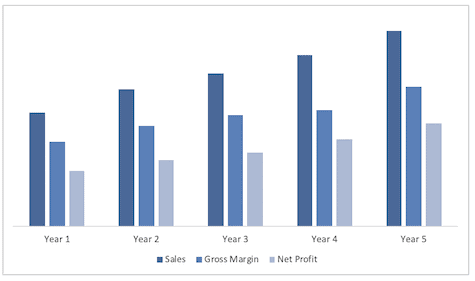
In developing your income statement, you need to devise assumptions. For example, will you deliver 100 meals per day or per week? And will sales grow by 2% or 10% per year? As you can imagine, your choice of assumptions will greatly impact the financial forecasts for your business. As much as possible, conduct research to try to root your assumptions in reality.
Balance Sheets : Balance sheets show your assets and liabilities. While balance sheets can include much information, try to simplify them to the key items you need to know about. For instance, if you spend $50,000 on building out your food delivery business, this will not give you immediate profits. Rather it is an asset that will hopefully help you generate profits for years to come. Likewise, if a bank writes you a check for $50,000, you don’t need to pay it back immediately. Rather, that is a liability you will pay back over time.
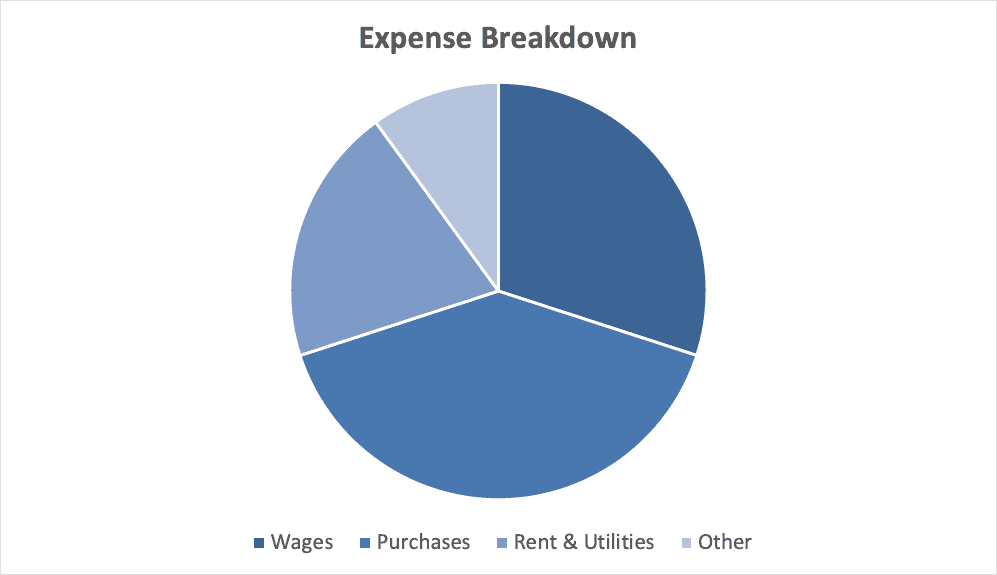
In developing your Income Statement and Balance Sheets be sure to include several of the key costs needed in starting or growing a food delivery business:
- Location build-out (if applicable) including design fees, construction, etc.
- Cost of equipment and supplies, including company vehicles
- Payroll or salaries paid to staff
- Business insurance
- Taxes and permits
- Legal expenses
Attach your full financial projections in the appendix of your plan along with any supporting documents that make your plan more compelling. For example, you might include your company vehicle lease or timetables for delivery days you are working on.
Putting together a business plan for your food delivery is a worthwhile endeavor. If you follow the template above, by the time you are done, you will truly be an expert. You will really understand the food delivery industry, your competition, and your customers. You will have developed a marketing plan and will really understand what it takes to launch and grow a successful food delivery business.
Don’t you wish there was a faster, easier way to finish your Food Delivery business plan?
OR, Let Us Develop Your Plan For You
Since 1999, Growthink has developed business plans for thousands of companies who have gone on to achieve tremendous success. See how Growthink’s business plan advisors can give you a winning business plan.
Other Helpful Business Plan Articles & Templates


IMAGES
COMMENTS
A Sample Online Food Delivery Business Plan Template 1. Industry Overview. Players in the homes and offices food delivery services industry are involved in delivery foods to any destination within their coverage area as ordered by their clients.
We have created this sample food delivery business plan for you to get a good idea about how perfect a food delivery business plan should look and what details you will need to include in your stunning business plan. Food Delivery Business Plan Outline. This is the standard food delivery business plan outline, which will cover all important ...
Develop A Food Delivery Business Plan - The first step in starting a business is to create a detailed food delivery business plan that outlines all aspects of the venture. This should include potential market size and target customers, the services or products you will offer, pricing strategies and a detailed financial forecast.
Aug 23, 2023 · Due to the easy and pleasant experience, 70% of consumers prefer to buy deliveries online. The office food delivery market’s “ghost kitchens” or “cloud kitchens” segment will be worth $1 trillion by 2030. Steps for Online Food Delivery Business Plan Step 1: Draft a Business Strategy for Food Delivery
May 30, 2024 · Source: Statista The global revenue in the online food delivery segment has doubled since 2017.; 57% of millennials prefer to have restaurant food delivered. 33% of consumers are willing to pay higher fees for faster delivery services.
A business plan will help you raise funding, if needed, and plan out the growth of your food delivery business in order to improve your chances of success. Your food delivery business plan is a living document that should be updated annually as your company grows and changes.